August 2025



Stop worrying about children, pets, wildlife and debris falling into your window wells.
Since 2017, Guardian Window Well Covers has been creating custom cover designs to enhance the safety and functionality of egress window wells. Our covers keep children and pets protected from falling into window wells, while keeping your window wells free of debris and elevating the aesthetic appeal of your home. These USA-made products are built to last and are backed by a 5-year warranty.
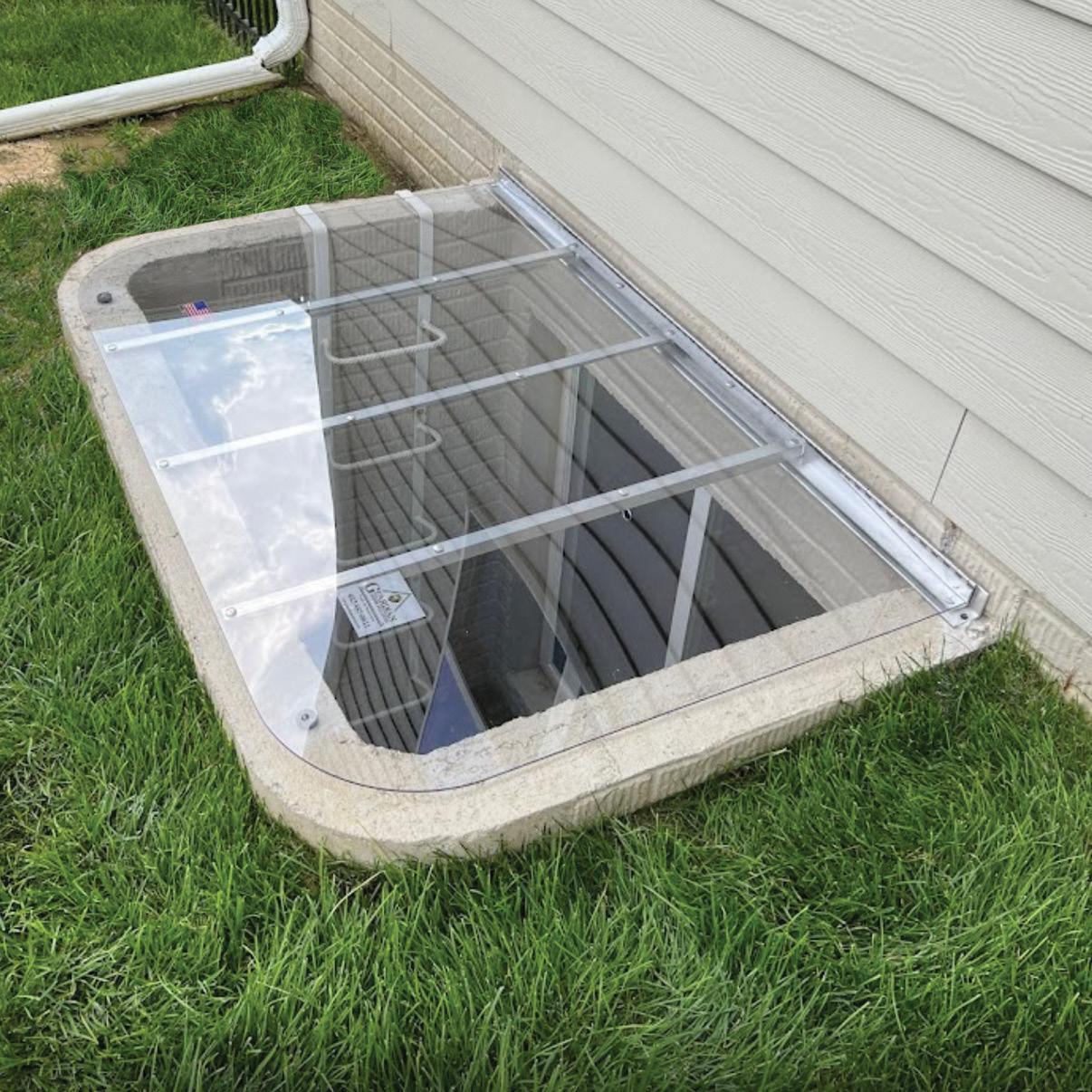


Custom-built for your home • Elevating both function and beauty
Industry-Leading Innovation • Unmatched Quality



“Afterresearchingoptionsforwindowwellcovers,wedecidedtouseGuardian andcouldn’tbehappier.Afterourinitialcontact,theirrepcameoutanddouble checkedourmeasurements.Lessthan2weekslater,theywerebackoutand installingthecovers.ThefolksatGuardianaregreattoworkwithandthe coversarephenomenal.Ihighlyrecommendedthem!!”—MikeWilliams
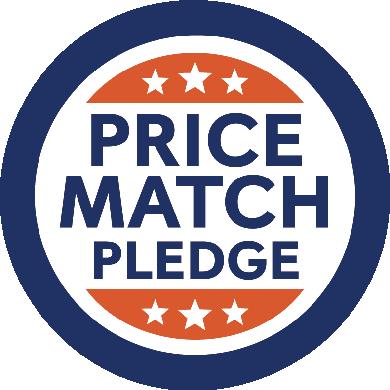










Summertime is almost over! I hope you all have had the opportunity to take a break… whether that means a staycation or the trip of your dreams. Summertime whizzes by so quickly these days, it’s like the blink of an eye!
Manny and I will be celebrating our sixth anniversary on August 25th. Wow! Pretty astonishing how fast that went. It has been quite the six years. We experienced the sudden passing of Manny’s father shortly after we were married. We made the trip to Los Angeles, where I met many of his family members for the first time. Then, in 2020, we all experienced the major challenges of COVID-19. Last November, we faced another challenge when I broke my femur. I am still recovering from that. Manny has been an absolute trooper!
What we have learned is the importance of communication with one another. As Manny told some friends the other night, “Janet is my best friend.” I feel exactly the same way about him. We talk all the time. We work every day to respect one another. At times, there are speed bumps, but we just get up and work on it again.
We have learned so much about one another and about ourselves. Years ago, my dear friend Renee taught me that when HALT is in play, it’s not a great time to have a conversation. What is HALT? It stands for Hungry, Angry, Lonely, Tired. I wish I had learned this decades ago! It would have eliminated a lot of drama in my life.
Manny and I are blessed to have found one another 13 years ago. The odds were pretty much against us. Here’s Manny, a 20-year Navy veteran, who was born 1,500 miles away in Los Angeles. He has been around the world 14 times, lived in Italy for six years, and also lived in Japan. He speaks three languages fluently—English, Spanish, and Italian. Me? Never moved away from Omaha. Never traveled to Europe. The only language I know is English. (I am picking up a little bit of Spanish! I can understand some of the conversation when Manny speaks to others in Spanish.)
As I have mentioned here, we met on Match.com. It seems like decades ago. It’s as if I have known him my entire life. I feel very blessed to have him as my husband. As I tell people all the time, “Manny is the best person I know.”
Happy anniversary, Manny. I love you.
We will talk next month! Steal a little bit of chill time before now and when the weather starts changing.
Janet Van deWalle, National Publisher
Positive Thought of the Month
“Love is a friendship set to music.” —Joseph Campbell
On the Cover:

More information at esqualo.com
Happy 40th Anniversary to Beyond the Vine. They are celebrating their anniversary by offering a 40% discount on any item during the month of August. See their ad on page 35 and their interview on pages 54 and 55.
If you have ever wanted to try a Kangen Water® system, now is the time. Contact Teddi for a 10-day free trial or use the QR code in their ad on page 17.
Summer is quickly coming to a close. Do you have cracked or crumbling concrete that needs repair before winter? Now is the time to give Save The Pave a call. No job is too small. See their ad on page 41.
The Scottish Rite is hosting the annual RiteCare Classic Golf Outing & Benefit, Wednesday, September 26th, which supports the RiteCare Speech and Language Clinics and the Scottish Rite Foundation of Omaha. Sign up for a great day of golf at Willow Lakes Golf Course in Bellevue, Nebraska. See their ad on page 13. For more details, go to their website scottishriteomaha.org/golf.
Interiors Joan and Associates are now offering a quality line of custom cabinetry. If you have never visited their showrooms in Omaha and Lincoln, you need to make it a point to do so. They have an exquisite selection of furnishings and accessories. See their ad on page 30.


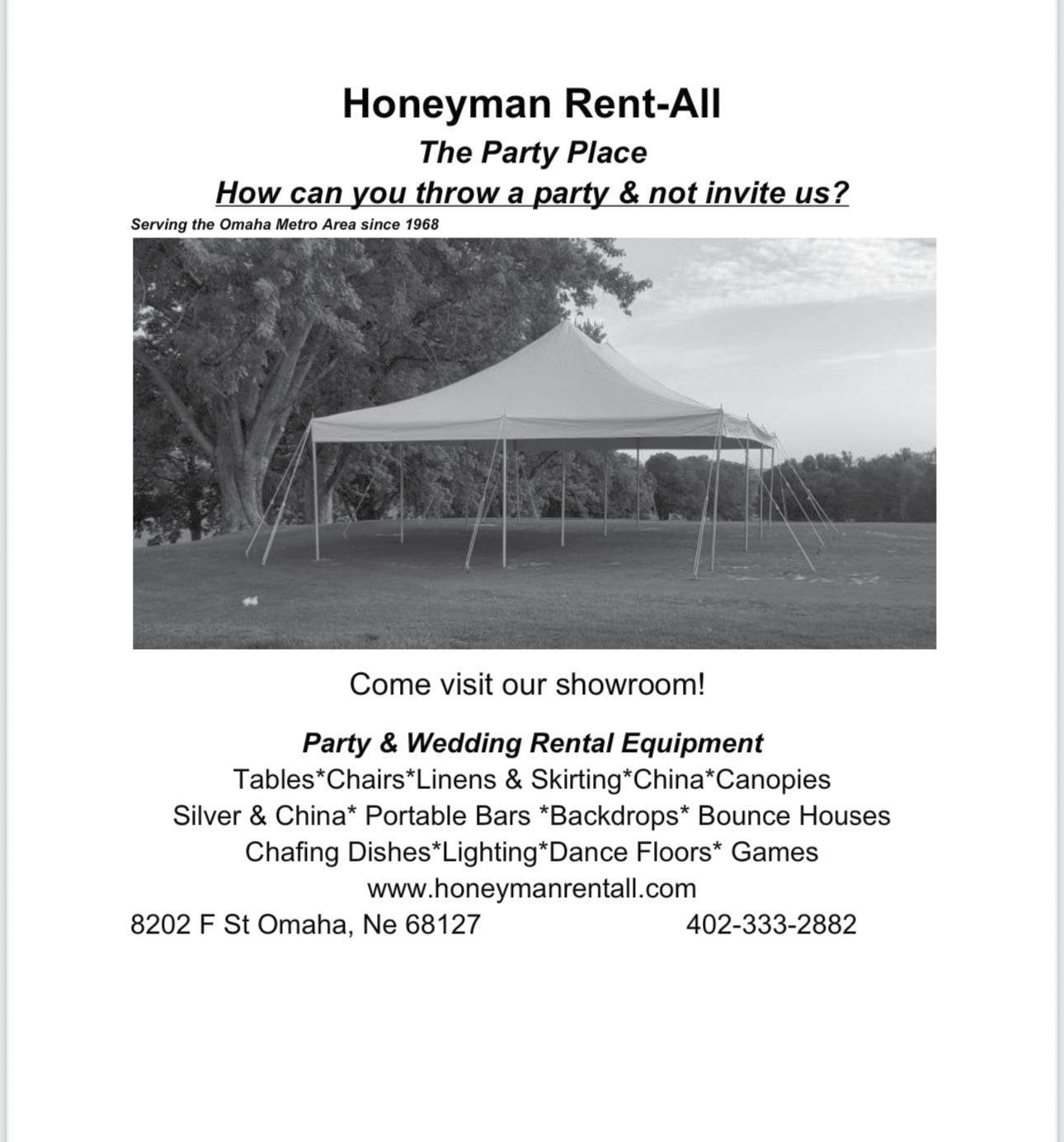

Business
Income
Peak
Kids






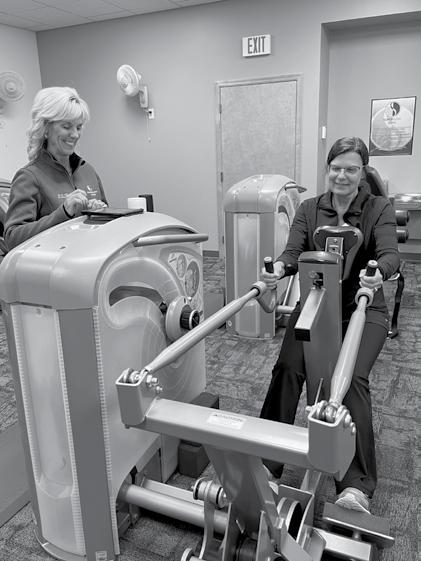









By Kate Beiting
Whisk together 1 and 1/4 cups of flour, 3 Tablespoons of sugar, 1 and 1/2 teaspoons of baking soda, and 1/2 teaspoon of salt. In another bowl, mix 1 and 1/2 cups of buttermilk, 2 Tablespoons of melted butter, and 1 egg. Blend all ingredients together. Mix with an electric mixer (or food processor or smoothie maker) for 1 minute, until smooth and frothy. Let the batter rest for 5 minutes. Cook on a hot griddle for 1–2 minutes per side, until golden. Serve with warm syrups and fruit.
Rub a 3-pound rump roast or chuck roast with seasoned flour (flour, garlic powder, onion powder, salt and pepper). Sear the meat in a bit of oil for 3–4 minutes and then place it into a slow cooker. Add a can (or box) of beef broth, 3 dashes of Worcestershire sauce, 1 cut-up onion, and half a jar of pepperoncini. Cook all day (8 hours) on low. Remove from the slow cooker and use 2 forks to shred the meat. Return it to the slow cooker until ready to serve with toasted buns and extra condiments. A delicious dinner, and a cool kitchen. What a treat!
Wash 8 fresh tomatoes. Slice off the tops and scoop out the center pulp. Mix the tomato pulp with 3/4 cup of Italian breadcrumbs, 6 Tablespoons of melted butter, a bit of fresh basil, salt and pepper, and any additional flavors you desire. Mix in 1 cup of shredded cheese. Fill the tomatoes with the stuffing. You can grill or bake these (350-degree oven for 20 minutes). Sprinkle with fresh parsley and more cheese before serving.
Line a pie plate with a pie crust (your own or purchased). Flute the crust, then pre-bake and cool. In a large saucepan, sauté 6 cups of sliced sweet onions in 1 Tablespoon of olive oil and 3 Tablespoons of butter. Sauté the onions until golden. In another bowl, mix 2 eggs, 1 cup of Half and Half, 2 Tablespoons of flour, 1 teaspoon of salt, 1 teaspoon of pepper, and a pinch of ground nutmeg. Add 1/2 cup of shredded Swiss or Gruyère. Mix in the onions.
Pour the onion mixture into the cooled pie crust and top with another 1/2 cup of the shredded cheese. Bake at 375 degrees (on a cookie sheet) until golden, about 25–30 minutes. Cool for 5–10 minutes. Cut into wedges and serve with a garden salad.
Put 4–6 cups of cleaned berries (any kind) in a large saucepan. Add 1/2 cup of water, 1 cup of sugar, and 1 Tablespoon of cornstarch. Stir. Cook for 5–8 minutes, mashing up the berries a bit. Let cool. Sprinkle in a bit of cinnamon sugar.
Line a pie plate with a prepared pastry crust and pour in the






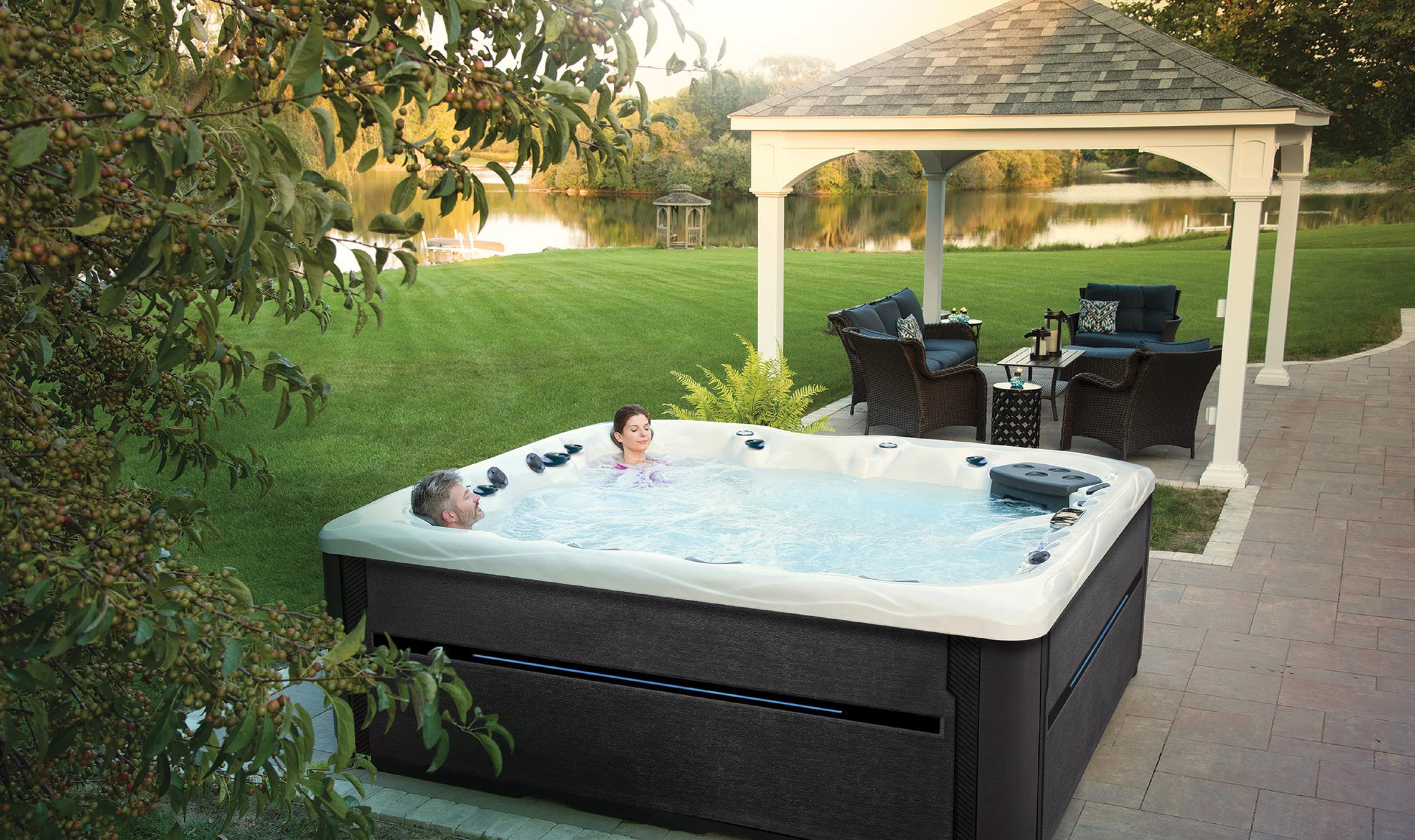
At Home Innovations, we have chosen a wide variety of brands that will offer anything you want in an in-home luxury swim spa or hot tub, and our experts will help you find the spa or hot tub that fits your lifestyle. Our delivery and set up service allows you to relax and enjoy your new spa or hot tub, making this experience easy and hassle-free for you and your family.
“The team at Home Innovations Spa did a fantastic job leading us through the selection, purchase, installation, and the training for our new Master Swim Spa. Our Spa has been used every day for the last 30 days including some 0 degree mornings! We are so glad we chose Home Innovations and we recommend them and Master Spa completely!”—D. Buchanan








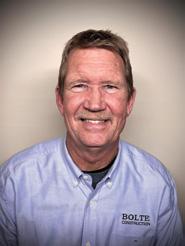



berries. Dot with a few pieces of butter. Place another crust on top, flute the edges, and cut vent slats. (You could also do a lattice crust or a crumble, if you prefer.) Place the pie dish on a cookie sheet. Sprinkle the top of the pie with a bit of sugar. Bake at 350 degrees for 50 minutes or until golden and bubbly.
Fresh Strawberry Picnic Pie
Blind-bake a pie shell and let it cool. In a saucepan, whisk together 1 and 1/4 cups of sugar, 3 Tablespoons of cornstarch, and 1 cup of water. Bring to a boil, then reduce heat to simmer for 4–5 minutes, until thickened. Whisk in 3 Tablespoons of strawberry jelly or jam. Let cool. Put 2–3 cups of washed, hulled, and sliced strawberries into the baked pie crust. Pour the strawberry jelly mixture over the top. Refrigerate until the pie sets up. Serve with whipped cream.
Grilled Turkey Burgers With Tomato Jam
Mix 2 pounds of ground turkey with 1 cup of breadcrumbs, 1 egg, 2 chopped green onions, a dash of soy sauce, and 1/2 teaspoon of cumin. Salt and pepper as desired. Form into 6–8 patties. Chill until ready to cook. Grill as usual.
While the burgers are grilling, mix 1 chopped tomato with 1 teaspoon of diced cilantro, 2 Tablespoons of brown sugar, 1 Tablespoon of lime juice, and 1–2 Tablespoons of sour cream. Serve the tomato jam with the burgers.
Grilled
While the grill is heating up, peel back a few layers of husks from fresh corn and soak the corn in water for 10 minutes. Grill on medium for 15–20 minutes. Mix up a stick or two of soft butter, adding any herbs you like: garlic powder, chili powder, salt and pepper, onion powder, taco seasoning. Let the corn cool slightly, then slather with the herb butter and serve.
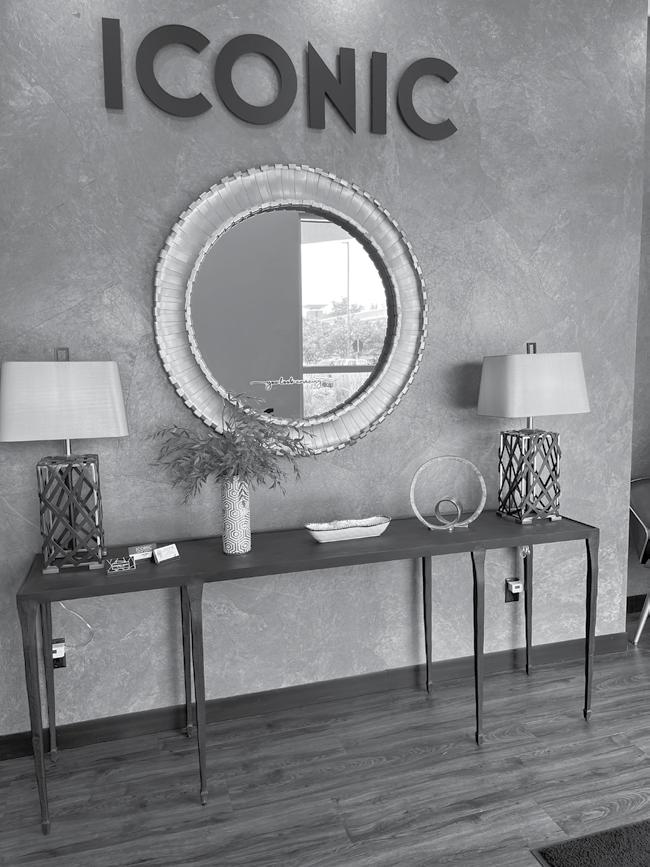


Homemade Peach Pie
Mix together 3 Tablespoons of soft butter, 1 cup of sugar, and 1/2 cup of flour. Set aside. Place a homemade or purchased pie crust in the bottom of a pie pan. Add half of the butter mixture and spread it around the crust. Add 4 (or 6) large peeled and sliced peaches. Dot with the remaining butter-flour mixture. Pour 1/2 cup of whipping cream over the peaches. Place the second pie crust on top. Spread a thin layer of sour cream over the crust and sprinkle on some sugar. Bake (on a cookie sheet) for 1 hour at 375 degrees.
Prepare 6 cups of any fresh seasonal fruits, like peaches, strawberries, other berries, rhubarb, and apricots. Wash, peel, seed, and/or stem the fruit—whatever needs to be done. Place the fruit in a lightly sprayed 9x13-inch baking dish. Add a bit of cinnamon or nutmeg and 1 teaspoon of cornstarch to 1/2 to 1 cup of sugar. Sprinkle the mixture over the fruit.
For the topping, mix together 12 Tablespoons of soft butter, 1 and 1/2 cups of uncooked oats (regular or old-fashioned), 1/2 cup of brown sugar, 1 teaspoon of cinnamon, and 1 cup of flour. Mix together until crumbly. Spread the topping over the fruit. Bake at 350 degrees for 45–55 minutes, until golden.
Rinse 2–3 cups of blackberries and set aside. Grease an 8-inch cake pan and line it with a piece of buttered parchment paper. Put the blackberries into the pan. Sprinkle in 1/4 cup of sugar mixed with 1 teaspoon of cornstarch. In a bowl, mix 1/2 stick of soft butter and 1/2 cup of sugar. Add 1/2 teaspoon of baking soda, 1 egg, 1 teaspoon of vanilla, 1/2 cup of milk, and 1 cup of flour. Beat for 2 minutes. Pour the batter over the berries. Bake at 400 degrees for 30 minutes. Cool for 10 minutes, then turn the pan upside down onto a serving plate. Remove the parchment. Serve warm with vanilla ice cream, whipped cream, and chocolate curls.



By Holly Bell
It seems like we just got used to the idea of summer, and already fall is rushing at us! How can we transition our wardrobe to cooler temperatures while still enjoying our summer vibe? In a few words: the fitted cardigan. No more oversized baggy cardigans that add pounds and years! Grab a shorter, shapelier cardigan that skims your body rather than hiding it.
Fitted cardigans are posh and slimming when buttoned up the front. When worn unbuttoned over a fitted top, a cardigan adds the finishing touch of a third piece. Choose an elegant, neutral color that works with everything or enjoy a pop of color with jewel tones. Style your cardigan with a pair of polished trousers for a chic and elegant vibe.
This fall’s color favorites create an opportunity that instantly elevates your outfit to timeless and chic. Perfect for transitioning into fall is the combination of navy and white—always crisp, clean, and fashionable. Try a navy blazer or cardigan over white pants for a look to carry you from summer into fall. Metallic jewelry accents add a little sparkle to your navy and white outfit.
Another favorite color combo this year will be burgundy and camel. This grouping exudes understated elegance and luxury. The neutral camel and the warm burgundy, when worn together, simply radiate warmth and sophistication. Think of a burgundy sweater and camel pants, or a burgundy trouser with a camel blazer. Finish your outfit with brown or tan accessories.




Another way to wear the hot fall color of burgundy is to pair it with gray. The rich drama of burgundy works well with gray’s calming influence. Think of a gray dress accessorized with burgundy shoes and handbag. Classy and elegant for sure!
My favorite fall color combination will be the pairing of black and gold. Black is the perfect canvas for showing off the shimmer of gold. Picture an all-black outfit brought from tame to opulent with a gold belt and jewelry. Black-and-gold lends a dressy vibe to the most casual of outfits. Dark wash jeans with a black top and gold necklace goes from casual to dressy with flair.
For those who love lighter neutral tones like beige and white, wearing them together creates a look of quiet luxury that works well with all skin tones. If quiet luxury is not your thing, try the drastic combination of black, white, and red. Start with a basic outfit such as a white top and black pants. Accent with a touch of red, like a red handbag, shoes, vest, or
scarf, or top it off with a red cardigan or blazer. This combination is eye-catching and exudes confidence.
When you use solid colors as the base for your color combinations, texture is the star rather than patterns. Choose solid-color fabrics with interesting textures for dynamic solid color combinations.
With an emphasis on solid colors this fall, patterns this year will be simple and subtle. Even the fall favorite leopard print will look most modern in subtle brown, black, and tan combinations. Other animal prints, such as snake and tiger, are also on the forefront, but in a subtler way.
Polka dots are popular in all seasons. Choose a small polka dot print that works with all your neutrals but adds a bit of whimsy and fun to your outfit.
Stripes and diagonal lines are also important and never go out of style. The key is that they are narrow and subtle, not wide and flashy. Rather than the usual plaid pattern for fall, argyle will be popular this year, along with diamond shaped patterns or lines.
And how will we accessorize all of this fall luxury? Accessories can make an outfit, and popular choices this fall are both classic and innovative. Shoes and handbags will again be dominated by brown and mocha. The versatility of these colors is timeless and elegant.
We will see some other fun and cozy accessories this fall. We’ll be wearing long gloves that reach the elbow. In some cases, bracelets and belts will be worn over clothes. (Think of a sweater with bracelets worn over the cuff or bracelets worn over your gloves.) Oversize scarves will make a cozy statement and add a punch of interest to any outfit. Gold jewelry is still the most popular, with designers offering some bolder pieces.
There is something about fall’s cooler temperatures and the changing of the seasons that makes us want to refresh everything, from our wardrobes to our makeup to the throw pillows on our sofa! Fall is a great time to hit the refresh button. Have fun with fall!







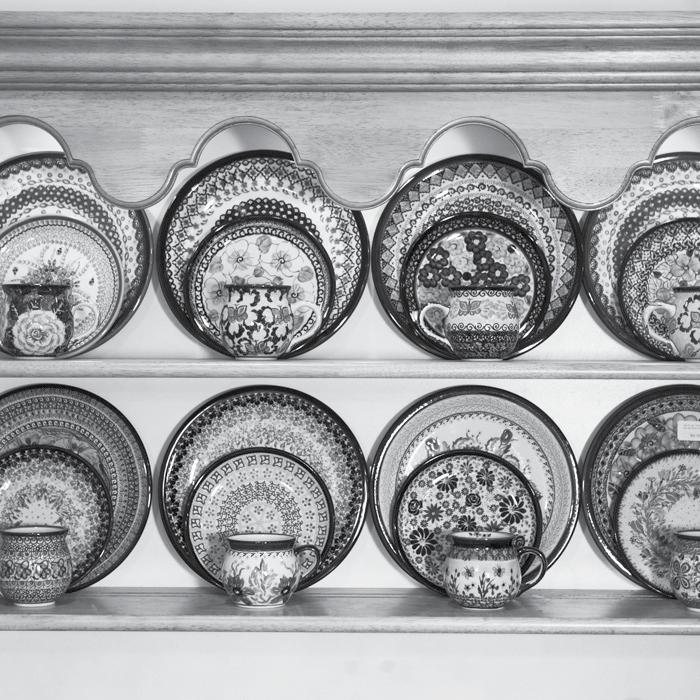






The advantages of using a specialty battery store as opposed to your corner drugstore are quite powerful (please excuse the pun). The most obvious advantage is the wide selection of batteries you will find. At a specialty store, you will encounter staff members with expertise in batteries. They will be able to provide valuable advice and help you find the correct battery for your needs.
Action Batteries Unlimited Inc. has hassle-free, same-day pickup and delivery. You can expect quality batteries and reasonable prices, which we all want. Our staff will even install the battery for you—installation can be tricky!
Action Batteries Unlimited Inc. has all these advantages and more. They carry automotive, marine, motorcycle, laptop, cell phone, camera, mobility, lawn and garden, and 2-way radio batteries, to name a few. And they are locally owned and operated, which is always a plus. Action Batteries Unlimited is an authorized distributor of AC Delco batteries. They also carry American-made Crown Battery Products.
The delightful CFO of Action Batteries Unlimited is Gwyn Fuxa. She came to work for the company 17 years ago, and she still loves what she does. Gwyn moved to Omaha when she was only six years old and attended Marian High School and the University of Nebraska. Her beloved husband worked with her until his passing four years ago. Gwyn takes care of all accounts receivable. Her right-hand man, Michael, is in charge of ordering. Gwyn has an amazing and impressive team! They all work together to provide an outstanding experience for each and every customer.
There are many things that I did not know a specialty battery shop could do. For instance, you can purchase a car battery at Action Batteries Unlimited. In most cases, they will install the battery for free. (The exception would be the cars that have that start/stop feature; then, an auxiliary battery needs to be installed as well, for a minimal fee.)
Here’s another thing: Whenever you have worn-out batteries or your batteries are ready to be replaced, Action Batteries Unlimited can properly dispose of them for you, including recycling the components that can be recycled.
You might think that service this good would translate into higher prices…but you would be incorrect. As a matter of fact, it turns out that batteries at Action Batteries Unlimited are considerably cheaper than you would find at a big box store, even ones as simple as AA batteries. If you have ever had trouble finding a specific type of battery, Action Batteries Unlimited is the place to go. If, by chance, they do not carry what you are looking for, they can order it for you.
With prices and tariffs rising, Gwyn points out, planning for the future is a challenge that many small businesses are facing
By Linda Sutherland

If you have ever had trouble finding a specific type of battery, Action Batteries Unlimited is the place to go.
these days. In this economic climate, it is more crucial than ever to support small businesses when we make our purchasing decisions. If we don’t, they may not be around to support! For anyone planning to start their own small business, Gwyn recommends thoroughly studying the market that you plan to open in. “Also,” she advises, “hire talented people and pay them well!” Gwyn certainly has that covered.
This company has glittering reviews. One customer, Al, writes, “I went in at 8:00 a.m., and the place was already busy. I thought I would have to wait, but there was someone right there to help me. Not only did they have the battery I needed, it was reasonably priced! I was in and out in about 5 minutes. Fantastic job, Action Batteries!!!”
Emily says, “I went here for a second opinion after getting an astronomical quote from a dealership. The people at Action Batteries Unlimited are AMAZING and walked me through the quote and what things should ‘actually’ cost. I will never go anywhere else for battery support. Thank you!”
And perhaps customer SK says it best: “These guys right here, they are the battery masters!”
Gwyn loves hearing feedback like this. “We have a great deal of repeat customers. That makes me happy and makes me know we are doing business that we can be proud of.”
Action Batteries Unlimited is located at 7911 J Street. Stop in or call 402-339-1667. Find them online at actionbatteries.com.


• Accommodates up to 250 guests in the ballroom
• Beautiful hardwood dance floor
• The Lounge is second to none with its marble-topped bar & fireplace
• Dimmable lighting, audio and video capabilities
• You can use your own caterer
• Easy accessible service areas
Ample attached garage parking
Scottish Rite Masonic Center is truly an impressive venue to host any personal or corporate event. Whether you use the ballroom, lounge or take advantage of the 400 seat auditorium, this is a special place for receptions or events. Let us help you make your event extraordinary.


technology to ensure the best surgical outcome.
“Dr Shnayder is amazing! I was sent to him originally for oral surgery and was pleasantly surprised to find that he does much more than dental. I had many questions and he took the time to answer every single one of them. He was so considerate as I was nervous for the procedure. He made sure I was comfortable and pain free. All the staff front and back office did the same. I felt very welcomed and well taken care of. I highly recommend!” — Angela D.

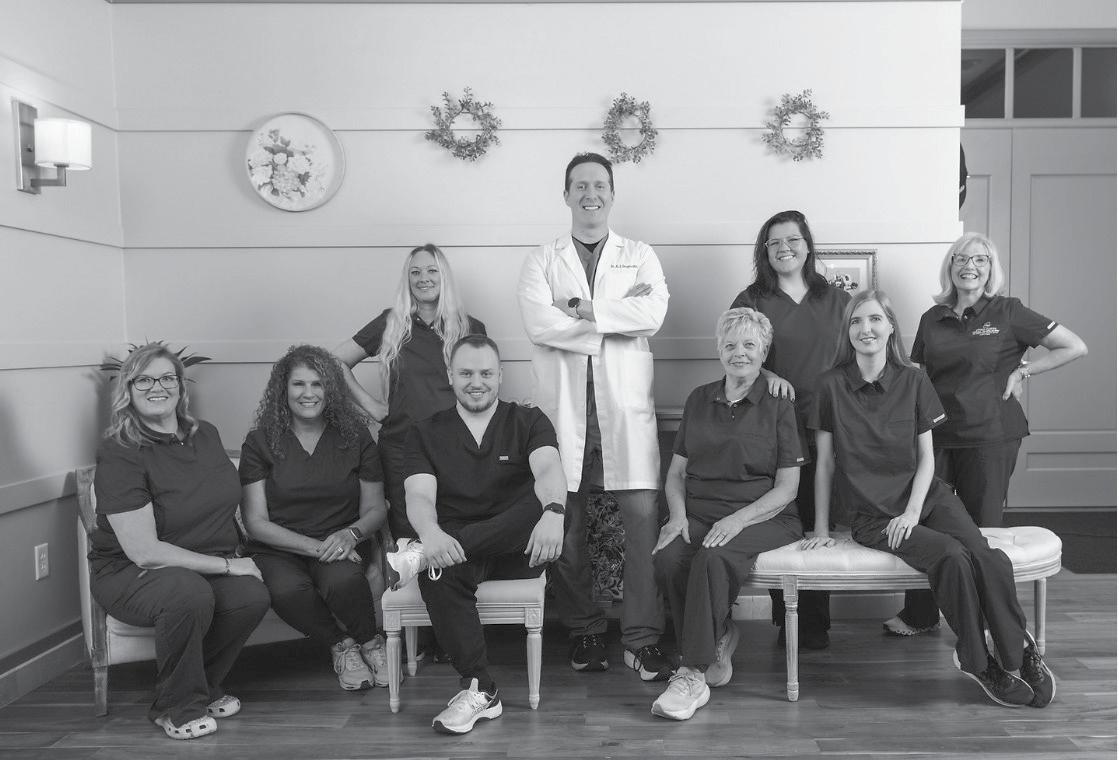



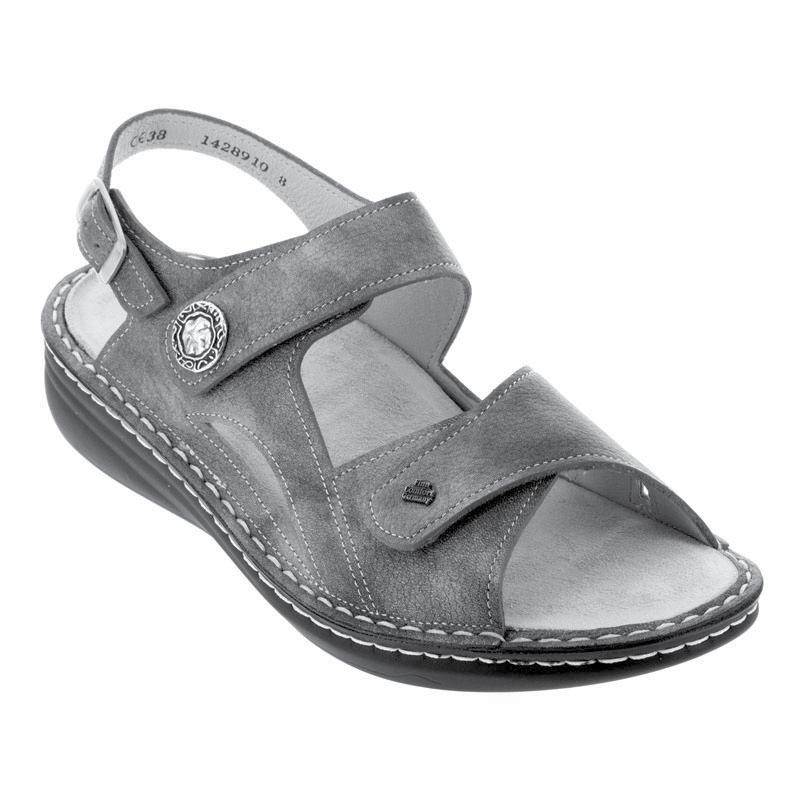








—Janet Van deWalle, Founder/National


23 – August 22)
Lions, it’s time to roar! Trust your instincts and let your natural leadership skills guide you forward. You may need to have an honest conversation with a loved one about your needs, desires, and boundaries. Work together to support both your identities while functioning as a team. You have what it takes!
Virgo (Aug. 23 – Sep. 22) As the Trekkies say, it’s time “to boldly go where no one has gone before.” For you, that means taking steps to create the life you really want to live. At work, it could mean taking on new projects that showcase your talents.
Libra (Sep. 23 – Oct. 22) This is the time to nurture relationships with like-minded individuals who share your goals. You will find yourself drawn to innovative projects that allow you to make a positive impact on the world. Take the leap and trust the connections you are making.
Scorpio (Oct. 23 – Nov. 21) This month brings a sense of completion. Prepare to shed old habits and embrace a new level of freedom and alignment with your soul’s purpose. Know that you have the strength you need for the journey.
Sagittarius (Nov. 22 – Dec. 21) August brings opportunities for recognition and connection in your professional life. Embrace your curiosity and seek out new ideas and perspectives. Your collaborations will have a significant impact on your long-term success.
Capricorn (Dec. 22 – Jan. 19) It’s time for a change. Let go of old patterns and get ready for a more authentic version of yourself. At work, you may face old fears and self-doubts. Push them aside and trust your inner guidance, staying true to your values.
Aquarius (Jan. 20 – Feb. 19) Make bold moves in the direction of your

dreams. Share your truth with others and trust in the power of mutual support. Overcoming obstacles is just a part of growth.
Pisces (Feb. 20 – March 21) Set intentions for creating more balance and mutual support in your relationships. Be open to new opportunities for collaboration and growth. It is a time for spiritual retreats, workshops, and experiences that expand your consciousness.
Aries (Mar. 22 – Apr. 19) Look deep into your inner world to confront your fears and emerge with a greater self-awareness and purpose. Get organized! Work on your well-being and self-care. Share your unique abilities and let your light shine.
Taurus (Apr. 20 – May 20) This is a great time to make positive changes in your living space or family dynamics. Examine your professional path. Is it aligned with your authentic self and purpose?
Gemini (May 21 – Jun. 20) At the beginning of the month, you’ll feel the need to express yourself boldly and creatively. At the end of the month, you’ll need to temper that boldness with diligent efforts. Find the sweet spot that synthesizes fun with productivity.
Cancer (June 21 – July 22) Embrace disruptions to your regular routine. They are wake-up calls to create a greater presence in the world. Don’t shrink from the spotlight! An innovative work opportunity may arrive, allowing you more autonomy.


By Deborah Daley
Do you have the blues? Did you wake up on the wrong side of the bed? Are you down in the dumps? Whatever you choose to call it, it’s normal to be in a bad mood sometimes, even if it’s for no particular reason. We all need a pick-me-up every so often! But a bad mood left to simmer can sometimes boil over and make you (and those around you) feel worse. Whatever the cause of your blues, it is okay to set it aside and to focus on something that makes you feel good instead. Here are a few ideas that might help shoo those blues away.
Take a walk. A short wander through any green space can do a lot to bust a low mood. Walking in nature boosts the production of the hormones that help regulate mood. Sunlight can increase the production of serotonin, a chemical that helps improve mood. Light can also make you feel more energized and alert. In fact, research increasingly suggests that people who spend time outside regularly, or even look at images of nature when going out isn’t possible, often have better moods overall.
Laugh. If you’re feeling anxious or stressed about something— say, a big presentation at work or a heavy discussion with a loved one—laughing can help shake off some of the tension and leave you in a lighter frame of mind. Forcing a real, deep belly laugh may prove something of a challenge when you aren’t feeling very funny.
Sometimes, you need to look outside yourself for a laugh. I used to subscribe to Reader’s Digest just because I loved their jokes. These days, I like to watch animal videos to make myself laugh out loud. Smell something great. Air fresheners and scented candles are popular for a reason. The sense of smell can communicate directly with the amygdala (a part of the brain that helps regulate emotions). The connection between your brain and your sense of smell may also help explain why things that smell good can make you feel good. Take a moment to wash your hands with your favorite scented soap. Go outside and walk through a garden—stop and smell the roses! Light a candle, bake some cookies, dab a hint of perfume on your wrist—whatever aroma you love, take some time to enjoy it. Change things up. Sometimes, if I am down in the dumps, I need
a break in the routine of my environment. Rearranging my furniture often puts me in better spirits. I also like to organize a closet or drawer. (An added bonus of decluttering is that it pleases me to be in a tidy room.)
Turn up the tunes. I often play music while working or cleaning the house. Sometimes I even sing and dance along! It infuses me with energy and improves my mood.
Try a random act of kindness. Doing something for someone else or bringing a smile to someone’s face always lightens my mood. Check in with a neighbor while you’re walking the dog. If you see someone out working in the garden, compliment their flowers. Sometimes I take the time to write a review on a product or service I enjoyed. (I’ve been in marketing for decades, and I know how a positive review can make someone’s day!)
Reach out to a friend. Try calling or a texting a friend you haven’t talked to in a while…or one you talk to often. I have a best friend on the East Coast, and I can tell her anything. She listens patiently to my frustrations, is honest, offers encouraging words, and makes me laugh.
Other simple things you can do that can help improve your mood include staying active, getting a good night’s sleep, being social, and eating a healthy diet. Remember to talk to yourself in a positive way. It’s no use being your own worst critic! Speak to yourself like you would speak to a friend.
For me, getting a pet has been a great mood booster. I don’t know what I would have done without my beloved dog during the lonely time of pandemic isolation. I had someone to talk to. In fact, studies show that animal companions can reduce stress and anxiety.
One thing that many of us forget: Ask for help! Therapists are for everyone. Mental health specialists can help us stay positive, set goals, communicate more clearly, and keep our lives moving in the direction we choose.
Remember, it is entirely normal to feel down sometimes. No one is in a good mood all the time! You are human, and you can lift your spirits.












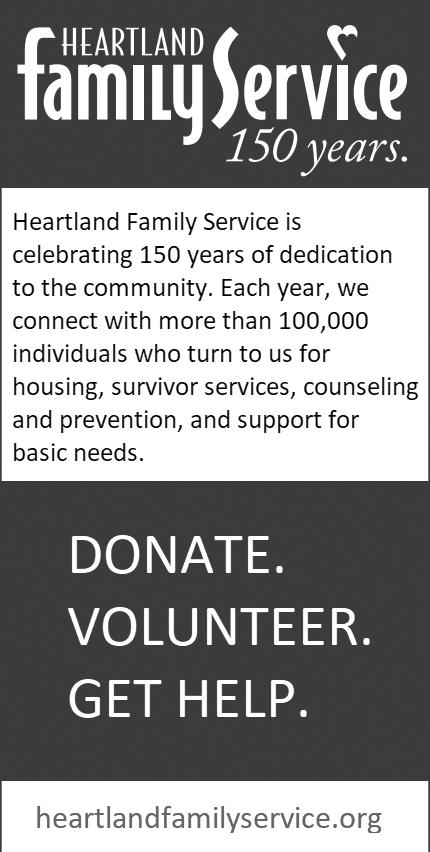
In Omaha, Spezia has long been known for its Italian cuisine and spectacular steaks. What many people might not realize is that Spezia is also a fabulous event destination. The restaurant offers its unique ambience to groups of up to 80 people, in party rooms or patio seating.
Events Coordinator Kaylynn Zonkger notes that Spezia has hosted weddings, rehearsal dinners, business meetings, graduation parties, baby showers, retirements, financial planning seminars, and more. The prices are reasonable and are even lower during the week.
“People love our food, service, and ambience,” Kaylynn says, “and our location is so easy to reach. We take good care of our customers! Much of our business consists of return customers or referrals.”
Kaylynn, a Millard south graduate, started her career in food service when she was 17 years old. She worked at Johnny’s Italian Steakhouse for several years, where she was part of their training program until the restaurant closed. She joined the team at Spezia in July 2021. “I like the restaurant identity,” she shares. “People are in constant movement. There are all types of relationships to experience, from managing personnel to the camaraderie of the staff to the service relationships with guests.”
The event team works with the customer through the full event planning process. For groups under 20 guests, the venue can offer a full menu or a limited menu; for groups over 20, a limited menu is suggested. The team takes charge of every detail to make the event a success.
Mary Buckley loves booking Spezia for events. “The Chartered Financial Analysts (CFA) Society of Nebraska has had luncheon meetings at Spezia every couple of months for about four years,” Mary says. “Our members really enjoy the food, and the staff members are very accommodating. Kaylynn is great to work with.”
Spezia is owned by Brian Reilly, who is also head chef. “We are one of the only restaurants that serves the Greater Omaha 1920 steaks, cut in house,” Brian shares. “We also offer innovative pasta, fresh seafood, a full-service Enoteca wine bar, and beer and cocktails.”
Brian’s love of cooking surfaced at a young age, when he would watch Great Chefs of the World on PBS. He learned a lot working at a Greek restaurant during high school. When Brian graduated, his father convinced him to go to culinary school at Iowa Western, and his life’s passion began.
“I got a job on the salad line at Spezia during my second year of the culinary institute,” he recalls. “I then worked at Spezia in Sioux Falls, South Dakota (it has since closed). I came back to Omaha to be chef at Spezia. My current partner, Dave Thompson, is retiring, so I will be sole owner of the business.”
By Deborah Daley

“It’s a place where you can really dine and have a true experience.”
The restaurant has many repeat and loyal customers and, according to Brian, that’s one of the things that makes Spezia a unique and interesting place. “Our customers keep coming back because we take care of them with great service and because they love the food. In life, I have always tried to be a hard worker and give more effort than is expected. If you go above and beyond, people will notice! I practice that, and so does my staff.”
He also believes it is important to take care of his personnel. Many of his workers have been with Spezia for more than 10 years, which is unusual in the restaurant industry.
Brian encourages people to consider Spezia as an event venue. It’s more intimate than a hall, you’ll get great food and great service, and the prices are still reasonable. His event customers agree with this assessment. Nate and Hannah Schwab are regular customers of the restaurant. Their children, who live out of town, always insist on eating at Spezia when they come to Omaha.
Hannah raves about her experiences there. “Spezia is the only restaurant of its kind in Omaha,” she says. “It’s a place where you can really dine and have a true experience. You always have a good meal, good service, and a great atmosphere. That is why we decided to have my 80th birthday party there. Kaylynn, the event planner, was fantastic. Everything was impeccable.”
To learn more about Spezia’s menu and event booking details, visit speziarestaurant.com or call 402-391-2950. Spezia is located at 3125 South 72nd Street, just north of Interstate 80. They are open daily for lunch from 11 a.m. to 2 p.m. For the evening meal, they’re open from 4 p.m. to 8 p.m. on Sundays, from 4 p.m. to 9 p.m. on Monday through Thursday, and from 4 p.m. to 10 p.m. on Fridays and Saturdays.








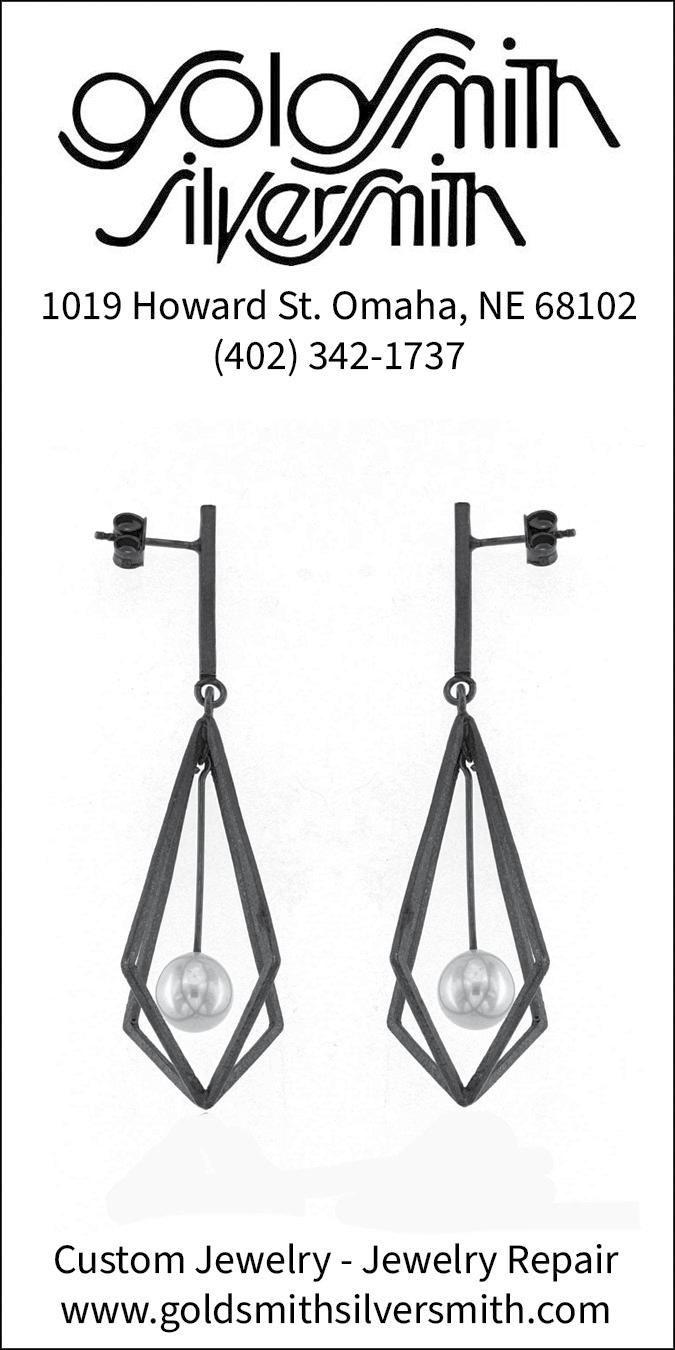
By Janette Calabro
Eyesight is vital to living in the modern world. Our eyes allow us to soak up breathtaking sunsets, revel in art, binge-watch our favorite shows, and even spot the last donut in the breakroom. It’s said that eyes are windows to the soul. True, but there’s a complex, delicate system going on behind the scenes. If you’ve never had much trouble with your eyes, it’s easy to take them for granted. Eyes deserve a lot more TLC than you might think. In fact, your eyes can say a lot more about your health than simply whether you need vision correction.
Good vision plays a critical role in the healthy function of our most vital organ, the brain. It decreases our chances of accidents during low light or high activity situations. Good eyesight allows us to communicate and interact with others, increases our ability to learn, and gives us the independence we need to live in a complex world. So, slip on your reading glasses, and let’s dive into the bright, fascinating world of eye health.
If you think an eye exam is just about getting a new prescription, think again. The eyes are one of the few places in the body where doctors can see blood vessels and nerves without any surgery involved. That’s right, your eye exam can sometimes reveal overall health challenges well before any symptoms appear.
For example, high blood sugar can cause damage to the tiny blood vessels in your eyes. This is called diabetic retinopathy, and its presence in your eye exam may predict diabetes. Narrowing or leaking eye vessels can be a telltale sign for high blood pressure. Autoimmune disorders can be detected, too, showing up as inflammation in the eye that can indicate conditions like lupus or rheumatoid arthritis.
Fatty deposits in the eye might suggest high cholesterol. Swelling in the optic nerve can be a red flag for brain tumors or aneurysms. Rarely, even certain cancers might be detectable inside or around the eye. The bottom line is that your eyes aren’t just windows to your soul—they’re also a sneak peek into your whole-body wellness.
When you go for an eye exam, what kind of eye doctor should you see? Ophthalmologists and optometrists are easy words to confuse, but there are important differences in these professions. Optometrists have a Doctor of Optometry degree (OD), and they are your go-to eye doctors for vision exams, glasses, contact lenses, and screening for eye diseases. Optometrists prescribe medications for eye conditions, too, but they don’t perform any major surgeries. Optometrists are perfect for a routine exam.
Ophthalmologists (MDs or DOs) are medical doctors who can perform everything that an optometrist does, plus any needed surgeries. An ophthalmologist is an important member of your health team if you need treatment for serious eye disease or management of complex eye conditions. Early detection of serious eye diseases can significantly impact eye conditions and preserve vision!
According to the Centers for Disease Control and Prevention (CDC), “the leading causes of blindness and low vision in the United States are primarily age-related eye diseases. Those diseases include
age-related macular degeneration, cataracts, diabetic retinopathy, and glaucoma.” They also state that refractive errors are the most frequent eye problems in the United States. Those include myopia (near-sightedness) and hyperopia (far-sightedness). This is where your prescription glasses or contacts come in handy. Other refractive errors include distorted vision at all distances (astigmatism) and presbyopia, which is the inability to focus up close (think holding the newspaper farther away to see clearly).
Age-related macular degeneration (AMD) makes the center of your visual field blurry or blocked. AMD comes in two types: dry and wet. Dry AMD is more common and occurs gradually as the macula (part of the retina) thins over time. Wet AMD develops more rapidly and is caused by abnormal blood vessel growth in the back of the eye. Both types may be treatable in the early stages, before visual aberrations appear. Regular eye exams are vital in diagnosing this condition!
Cataracts are the leading cause of vision loss in the United States. A cataract is essentially a cloudy area in the lens that makes vision blurry or less colorful. They can also limit night vision, which can make driving dangerous. This condition can happen at any time, at any age—even at birth!—but it is quite common in older people. The definitive treatment for cataracts is surgery in which your lens is replaced with an artificial one. It’s a very safe procedure with very high (around 90%) success rates.
Glaucoma damages the optic nerve that connects the eye to the brain, increasing eye pressure that can lead to vision loss. Early symptoms may not be noticeable. How do you get glaucoma? The risk increases with age, family history, and certain medical conditions like diabetes. Treatment through medications can lower eye pressure, but there are other options like laser treatments and surgery.
Diabetic retinopathy is the leading cause of blindness in American adults. Retinopathy progresses in four stages, damaging the blood vessels of the retina or the light-sensitive tissue at the back of the eye. Managing blood sugar levels, blood pressure, and cholesterol helps reduce your risk. Laser surgery, eye injections, and surgically removing blood and scar tissue from the eye are the treatments for serious cases.
Comprehensive eye exams should start as early as six months of age, then again at age three and before starting kindergarten. Adults aged 18–40 years can be examined every two years if general health
is good and there’s no need to wear glasses or contacts. After age 40, annual exams are recommended for most people.
Believe it or not, eye exams can be fun now. It’s not just squinting awkwardly to read letters on a chart anymore (though you might still do that). Eye exams today have a high-tech flair.
Optical coherence tomography is sort of like an ultrasound, but with light instead of sound. This is how your doc gets detailed, 3D images of your retina in seconds. Digital retinal imaging is pretty cool, too. High-resolution cameras can photograph the back of your eye for a close look at blood vessels and nerves. This type of exam may eliminate the need for dilation drops. Ask your professional if these technologies will work for you.
Wavefront aberrometry is a technology that maps out how light travels through the eye—perfect for laser surgeries or high-definition lenses. AI diagnostics (yes, artificial intelligence is everywhere!) can detect early signs of diseases like diabetic retinopathy with amazing accuracy.
If you’re dreaming about ditching your glasses, consider corrective eye surgery. These procedures are very effective and popular. Generally, they’re permanent. However, vision can always change with age, so enhancements may be needed.
LASIK surgery uses a precision laser to reshape the cornea to correct nearsightedness, farsightedness, and astigmatism. Recovery is generally quick, with the possibility of returning to normal activities the following day. Photorefractive keratectomy (PRK) uses a laser to remove the outer layer of the cornea. It’s a great option for patients with thinner corneas. Small incision lenticule extraction
(SMILE) is the new kid on the block. It is minimally invasive and causes less dry eye than LASIK surgery.
Other new treatments include light adjustable lenses—revolutionary implants used in cataract surgery that can be fine-tuned with UV light after surgery. Corneal inlays insert tiny lenses in the cornea to help with reading vision. Researchers are also exploring procedures to fix certain inherited eye diseases using gene editing. Talk about futuristic!
Can you eat your way to better vision? Yes! Nourish your eyes with vitamin A (carrots, sweet potatoes, and leafy greens), omega-3 fatty acids (salmon and flaxseed), and vitamins C and E (oranges, almonds, and sunflower seeds) to protect against oxidative damage. Lutein and zeaxanthin are antioxidants that work as sunglasses for your eyes. Find them in spinach, corn, egg yolks, or supplements! Stay hydrated, don’t smoke, and wear actual sunglasses to protect your eyes from UV rays.
Your eyes are always hard at work, from reading bedtime stories to focusing on the road during your commute. Taking care of them isn’t just about seeing clearly. It’s about protecting your overall health and fully enjoying life. Most eye diseases can be diagnosed during regular eye exams, perhaps before you’re even aware of symptoms. And the earlier treatment can begin, the better. Give your eyes the care the need, and your foreseeable future will look clear and bright!

Sources for this article included: cdc.gov, mayoclinic.org, nei.nih. gov, and aao.org.
• Retaining Walls
• Patios & Walkways
• Fire pits
• Outdoor Kitchens
• Water Features
• Landscape Lighting

• Softscape design and installation
• Spring and Fall Cleanups
• Mulching













Dunning Acupuncture and Massage
We strive to provide individualized, whole-person treatments in a comfortable, professional setting. Classic Traditional Chinese Medical (TCM) diagnosis and treatment gives the best treatment available for each person.
This month, we are featuring the Covid Kit, which includes the high-quality Chinese herbal formula “Jade Wind Screen.” This formula has been used for centuries to strengthen the protective capacity of the immune system against cold and flu. Also included is the “Cold Killer” formula, which is used for the early onset (days 1-3) of cold/flu symptoms. Detailed instructions included. Kit cost is $100. Call today: 402-650-7715
Cake Expressions, Inc.
Creating happy memories...that is what Cake Expressions is all about!
Let us make your special event, wedding, graduation, birthday, anniversary, or neighborhood get-together the best ever. We create extraordinary and delicious cakes, 3-D cakes, cupcake pull-a-parts, delightful pies, and cookies. Follow us on Facebook to see our delicious creations. Whatever you’re planning, make sure to call Debbie at Cake Expressions 402-933-4158. Located at 3503 Samson Way, Suite 100, in Bellevue.
Vein disease isn’t about appearance as much as it is about your health. Do you suffer from leg pain, swelling, restlessness, and skin discoloration? These are very common symptoms of vein disease. Left untreated, it can cause serious health issues. At VENUS, you may be surprised at how easily and comfortably you can improve your daily life. There is no downtime to recover, there’s no sedation or heavy medicines needed, and treatments are covered by medical insurance. You can go right back to work or exercise, and you will feel better and look better, too.
VENUS Vein Clinic—Your Go-To Vein Clinic. Don’t wait a day longer, call today at 402-979VEIN (8346) or visit VenusVeinClinic.com.



The Paw Spa Pet Resort
At The Paw Spa Pet Resort, we offer first class boarding, daycare, and grooming! Our knowledgable staff are passionate about what they do. We love all doges that walk through our doors! Our state-of-the-art facility was designed with your dog’s safety and comfort in mind.
Our expert groomers will also have your pup looking and feeling like the bark of the town! Call us at 402-516-8888 and check out our website ThePawSpaPetResort.com and plan your next visit with peace of mind, whether its for boarding, day care or grooming.
“Our Family Helping Yours” is more than just our slogan, it’s how we do business. Roeder Mortuary has been family-owned since 1912. Roeder serves you from three locations in the Omaha metro area. We offer funeral services of all kinds, including traditional, memorial, graveside, cremation, and more. Our caring staff is dedicated to assisting families through the difficulties of losing a loved one. Let us help you create the most personal, respectful, and meaningful service possible. For more information, visit our website at roedermortuary.com or call 402-332-0090.
Patti has a experienced background in real estate and is certified as a Senior Real Estate Specialist. If you are downsizing or have an estate property to sell, Patti is the one to call! The Furniture Girl can help take the burden off the entire process of holding an estate sale. The Furniture Girl will operate and organize all aspects of selling an estate. This includes the preparation and pricing, marketing, and managing the entire sale. We take the time to research and make sure all items are priced at fair market value, helping you to have a successful outcome for your sale! Call 402-707-8066.



You need to call Patti Wiggins or Jesse Skudler. Patti and Jesse





According to national health surveys, chronic pain affects 50 million Americans, 20 million of whom experience high-impact chronic pain. The causes of pain are varied, and so are the treatments. However, experts agree that each person with pain is entirely unique: a treatment that works well for one individual may cause a negative reaction in someone else.
People with pain often go through a long process of trial and error to identify what treatment or treatments will work best for them. A multidisciplinary, multimodal approach that combines various treatments is typically most effective. That is why the Omaha community is so lucky to have Midwest Pain Clinics in town! You do not simply have to live with pain. It can be managed so you can participate fully in life again, and Midwest Pain Clinics can help you get there.
Pain results from a variety of conditions. Acute pain can be caused by surgery, illness, or injury. Chronic pain, which is a persistent state of pain, is often associated with long-term medical conditions or diseases including arthritis, cancer, herniated disc disease, fibromyalgia, and migraines.
Pain conditions have also been linked to an increased risk of mental conditions like depression, anxiety, and post-traumatic stress disorder. A body in chronic pain continually sends stress signals to the brain, leading to a heightened perception of not only the pain itself but also of the perceived level of threat. It’s a vicious cycle.
Midwest Pain Clinics provide comprehensive care and support for all types of pain. “We treat head-to-toe acute and chronic pain conditions,” says Dr. Joseph Parks, who joined the team in April 2025. “Our multimodal approach utilizes medications, physical and occupational therapy, complementary and alternative medicine modalities, pain psychology, nutrition and weight management, and procedural-based interventions.”
Their on-site surgery center is an incredible convenience for patients who need to undergo procedures. They can provide IV sedation for anxious patients, even if the patient’s insurance company denies the sedation.
As many patients already know, pain is a complex problem that can require combining multiple treatments in order to get the best results. Having all of the pain management doctors together in one clinic helps them coordinate the team approach that their patients need.
The staff members at Midwest Pain Clinics have more than 30 years of experience finding long-term relief for individuals living with pain associated with accidents, surgery, and chronic conditions. Dr. Parks is a recent addition to the team, and he is pleased to be part of such a strong group.
By Deborah Daley

Dr. Parks was a US Air Force Health Professions Scholar at Michigan State University and graduated from Michigan State’s College of Osteopathic Medicine in 2014. He has completed a general surgery internship as well as fellowships in pain management and physical medicine and rehabilitation. He has also served as a US Air Force Flight Surgeon at Offutt AFB.
Dr. Parks specializes in treating head-to-toe pain, including migraines, spine pain, sports related conditions, and much more. He also performs minimally invasive procedures and surgeries to diagnose and treat conditions.
“I treat every patient as a unique individual with specific needs and symptoms,” says Dr. Parks. “I discuss with each patient what their ultimate needs and goals are, and then I tailor a treatment plan, with the patient’s input, to achieve those goals.” Treatments might include physical therapy, occupational therapy, prosthetics and orthotics, complementary and alternative medicine, chiropractic care, naturopathic medicine, pain psychology, and more.
A vital part of successful pain management, Dr. Parks asserts, is managing patients’ expectations of the process. Something that has been successful for one person’s pain might not be a good fit for another person, and patients need understand that pain management can be a long and complicated road. Communication is so important!
“The biggest reward is being able to make an impact on a patient’s life and help them continue life with less pain,” Dr. Parks shares. He loves helping patients get back to the point when they “can perform activities of daily living, enjoy hobbies or sports, be independent at home, or get back to work or school.”
Patients at Midwest Pain Clinics are pleased with the results. Sandra is a retired registered nurse suffering from chronic pain. “I also had occasional acute pain for which I was unable to obtain relief that would allow me to do the things I enjoy doing. They have helped so much! I would recommend them to anybody suffering from chronic pain.”
Midwest Pain Clinics has two locations: 825 North 90th Street, in Omaha, and 2301 Eastern Avenue, in Red Oak, Iowa. You can learn more or book an appointment on their website, midwestpainclinics. com, or by calling 402-391-7246.



By Loretta McCollum
During the cold, gray days of winter, we tend to spend more time indoors, where low humidity due to indoor heating causes our skin to lose hydration. We counter those effects by moisturizing more frequently. Conversely, the long summer days typically mean being outdoors for extended periods of time, forcing our skin to work overtime to maintain balance. In some regions, increased humidity leads to excess oil and sweat, which can clog pores. In dry, arid climates, our skin requires more frequent moisturization and hydration. Even if we faithfully apply sunscreen, UV exposure is still a concern.
Frequent facials give our skin the extra support it needs to keep that healthy summer glow. What do we mean by frequent? Getting a facial every four to six weeks is standard. However, if you’re experiencing breakouts, your skin looks dull, or you work outdoors, every two to three weeks is a better option.
Facials have so many benefits! They provide deep cleansing, preventing buildup from sweat and sunscreen. They exfoliate to clear pores. They’re hydrating and soothing, counteracting sun-induced dryness and calming sun-stressed skin.
As we age, our skin naturally becomes less elastic because of the decrease in collagen production. Facials can reduce the appearance of fine lines and wrinkles. They detoxify and tighten the skin, helping to retain moisture. Most facials utilize products rich in antioxidants, essential oils, and herbal extracts, accelerating the detoxification process.
Massaging any part of the body will improve blood circulation in that area. As circulation improves, skin cells take on more oxygen and
nutrients, accelerating cell regeneration. The face contains many pressure points, which are often massaged during a facial. This decreases physical and psychological stress while stimulating cell regeneration, giving the skin a more youthful appearance.
If your complexion is blotchy, the right facial can even out dark patches of skin caused by increased melanin production due to exposure to harmful sun rays. A facial provides the proper nutrients to brighten your skin and restore its more youthful appearance. A good facial will also reduce undereye bags and dark circles by providing hydration and nutrients targeting that delicate area of the face.
How do you determine which type of facial is best for you? The first step is to choose your clinician wisely. Schedule a consultation with a board-certified dermatologist or licensed aesthetician. They will determine a facial treatment suitable for your skin type. There are many types of facials to choose from!
The classic facial, also known as a European facial, is a basic

It’s a necessity, to keep young skin looking fresh and glowing and mature skin more vibrant and healthy. Our experienced estheticians can customize a facial treatment designed for your specific needs and skin type. Whether you want to minimize fine lines, diminish dark pigmentation, reduce breakouts, or just want to rejuvenate your skin, Faces Spa is the destination for facials. Call to schedule


August
August
August
August
August
August
August
August
August
August
August
August
August
August
August
“I began advertising with Women’s Edition starting with the November 2019 issue and I have been thrilled with the results! I’ve had numerous new clients come to the gallery because they saw my ads in Women’s Edition, even as I’ve been working by appointment in recent months due to the pandemic. Most had never been to downtown Ralston, where I’m located, so introducing them to our town and what we have to offer has been another benefit!
The advertising has resulted not only in sales, but also in new followers on my social media platforms and new newsletter subscribers. Together with their outstanding customer service and sales results, advertising with Women’s Edition has been one of the best investments I’ve ever made for my business. Thank you, Women’s Edition!”
—Debra Joy Groesser



facial that includes steaming the face, exfoliation, massaging, and possibly the application of masks, serums, or moisturizers. It deeply cleanses the face, unclogs pores, and evens out skin tone. It’s a good choice if you suffer from acne. A lymphatic massage may be part of a classic facial. In addition to being a wonderfully relaxing experience, lymphatic massage reduces puffiness and tension around the face and neck. It also helps decrease water retention and toxins. A classic facial can be customized to include anti-aging and hydration treatments.
A microcurrent facial refers to any facial that utilizes an electronic device. It’s completely safe and pain-free. Galvanic and high frequency facials are the most common microcurrent facials.
A galvanic facial uses low-voltage, direct current to stimulate and tone the facial muscles. This gives the skin a more lifted look and reshapes the face, making it appear more defined.
A high-frequency facial is sometimes called a radiofrequency facial. Electrical currents produce a certain amount of heat to stimulate deeper layers of the skin. Its anti-inflammatory heat kills bacteria, making this a good option to treat acne and get rid of acne scars.
LED light therapy also uses electricity. For this procedure, different wavelengths of light are employed to treat various skin issues. The different wavelengths, described by color, bring about different reactions in the skin. Blue light therapy fights inflammation and can help treat acne. Red light helps the skin heal more quickly and promotes collagen growth.
Those looking for a more dramatic change can consider more invasive options like laser resurfacing or chemical peels. A chemical peel uses an acid such as glycolic acid to promote skin turnover. It’s one of the most effective skin resurfacing treatments available. Benefits include getting rid of deep wrinkles, scars, and age spots. Laser resurfacing uses laser beams to create microscopic wounds in a pattern. Non-wounded cells encourage the wounded cells to heal, stimulating new cell generation. It’s great for fine lines, age spots, and enlarged pores.
Remember that your skin is more exposed during the summer months. Listen to your skin and give it the care it needs!

Sources for this article included: simplydermatology.com, realself.com, and facialesthetics.org.






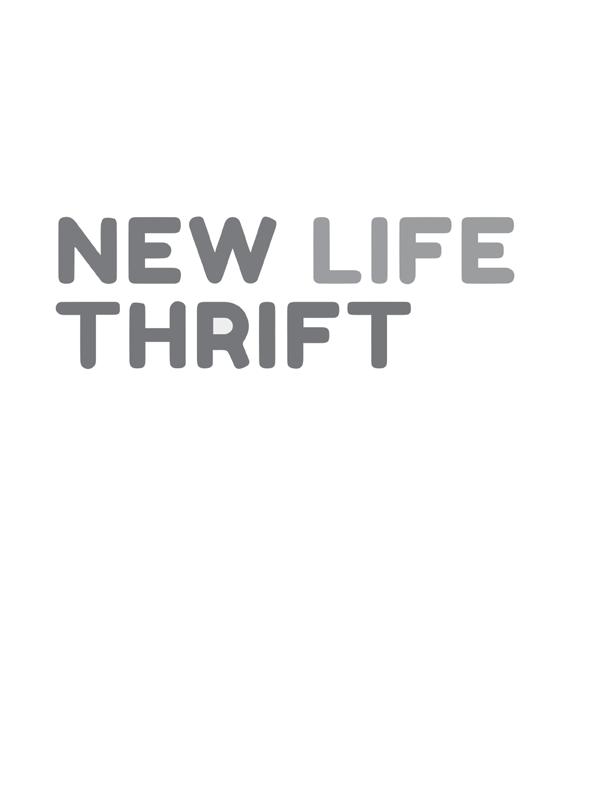





By Robyn V. Powell
Window treatments are one of the most important design elements in an interior space. Of course, they provide privacy and filter sunlight, but the right window treatments truly complement a room, adding the perfect finishing touch of softness and style. With so many available options, from shades to draperies to blinds, how do you choose the right style of window treatments for your home? Check out the latest styles to discover what’s new and what’s trending in window treatments.
In 2025, window treatment trends are shifting toward bold, statement-making design. We’re seeing minimalist design step back and maximalism step up, with a resurgence of vibrant color and dynamic patterns. No longer just a backdrop, window treatments are taking center stage, featuring bold colors and textured fabrics, along with eye-catching patterns like geometric shapes and oversized florals. By adding dimension and depth to spaces, window treatments become a focal point within the room.
The biophilic trend continues to dominate interior design in 2025. It’s all about creating interiors that connect with nature. What better way to bridge the gap between the indoors and the outdoors than by incorporating organic elements into window treatments? Blinds and shades made from natural materials such as wood, bamboo, or hemp help blur the lines. As homeowners strive to invite the outdoors in, woven shades have exploded in popularity. Lightweight and with a casual vibe, woven shades create an inviting

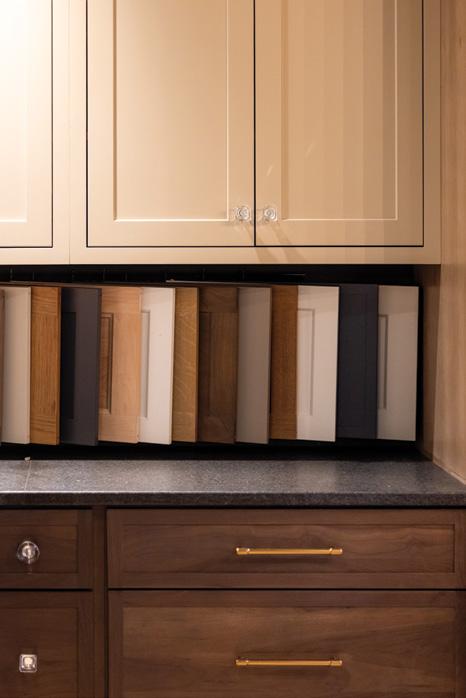
environment whether in a beach house or urban condo. Airy linen panels or soft, gauzy sheers set the mood to laid back and breezy!
The beauty of natural materials isn’t just their undeniable visual appeal. They have a calming effect on our psyche, bringing us a sense of warmth and serenity. Natural, sustainable materials offer a sustainable and eco-friendly element to any space.
Drapery is a classic window treatment, made of heavier fabric than curtains and typically cut to reach all the way to the floor. This year, we’re seeing a return to draperies in styles that are both decorative and functional. From farmhouse to contemporary chic, draperies can be custom designed from an endless array of fabric choices and finished with various pleat styles. Versatile draperies can stand alone, be layered over sheers, or simply added as stationary panels for a decorative accent.
Whether you wish to make your window treatments the star of the show or your preference is for shades that don’t distract from












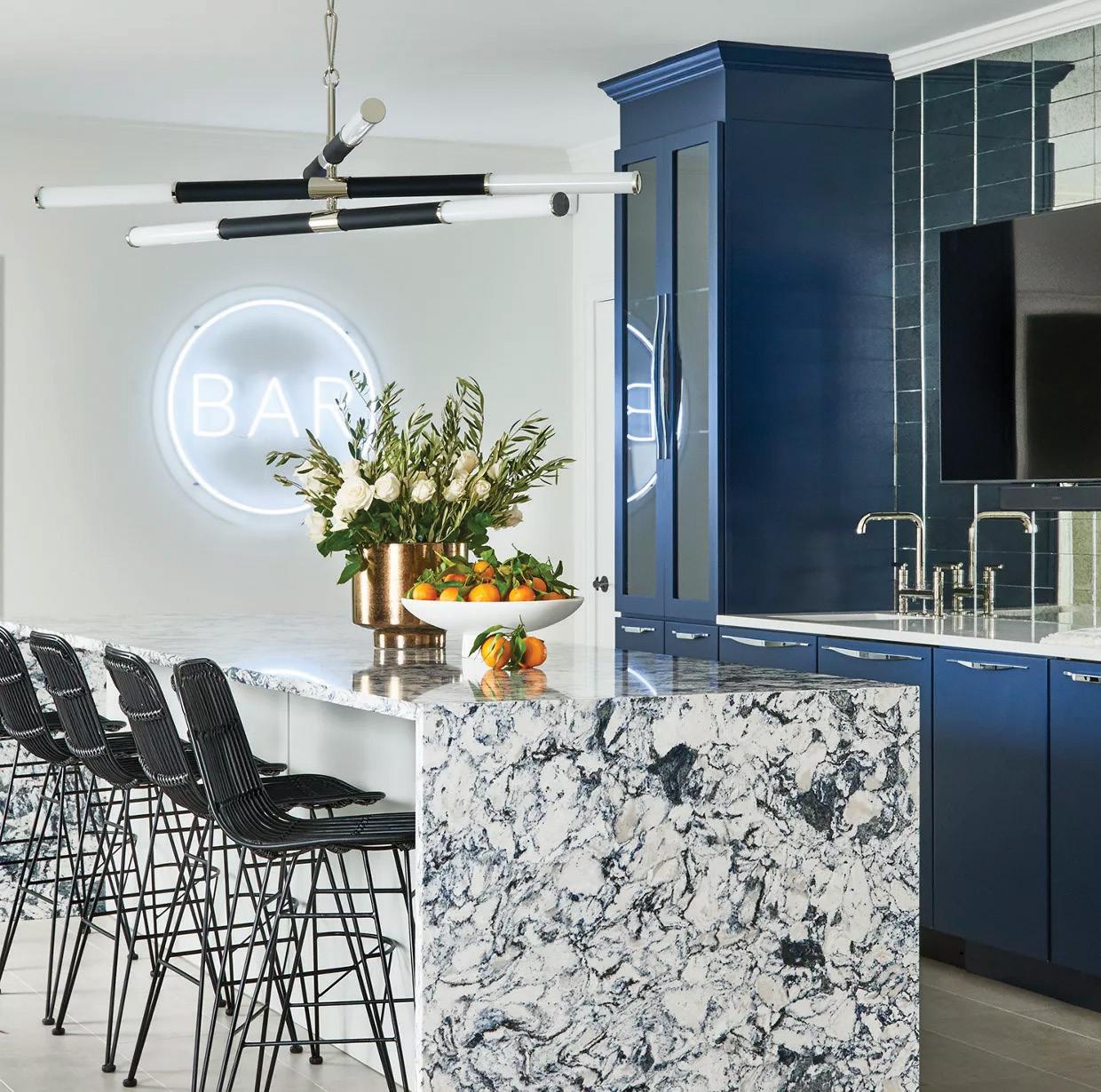

from the initial meeting with this group to the end of installation process.
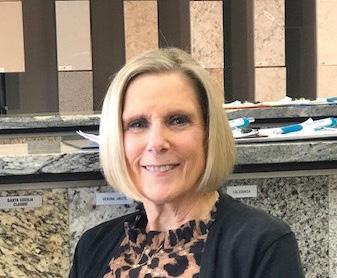
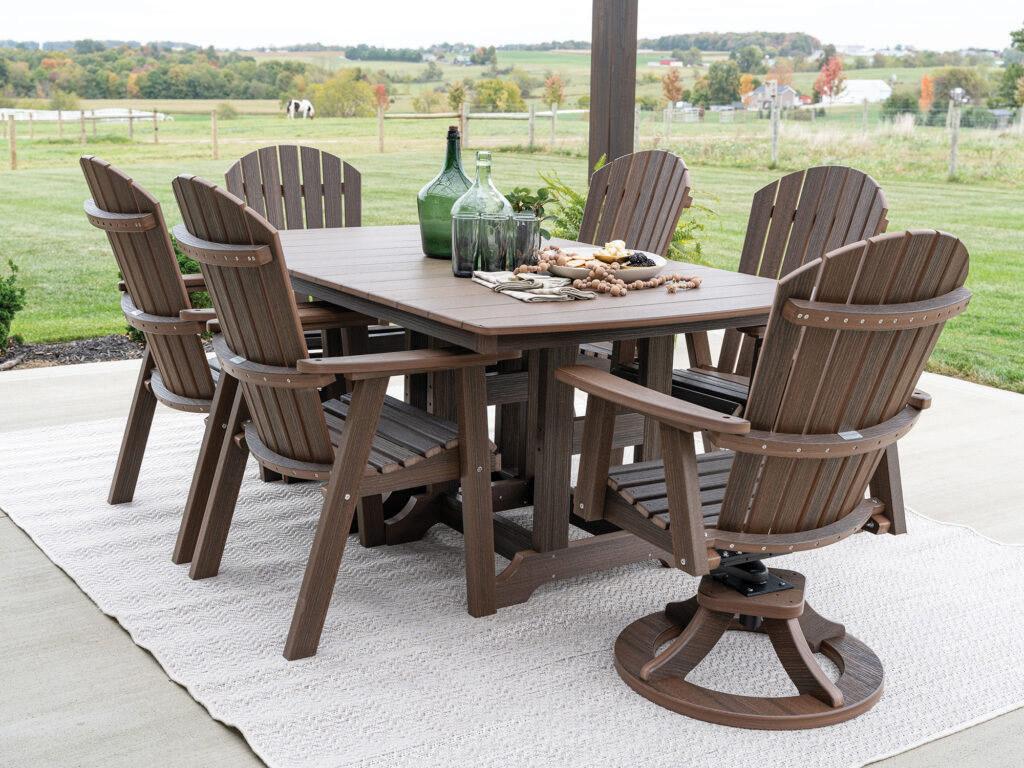



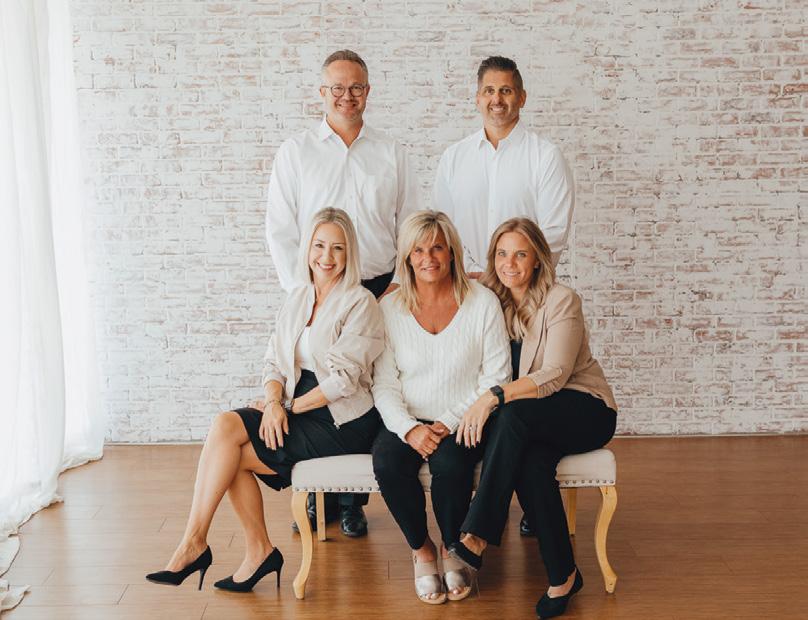





















the atmosphere of a peaceful space, you can’t go wrong with classic wood blinds. Wood blinds add natural warmth, depth, and dimension, making any room more inviting.
Genuine hardwood or faux wood blinds are a stylish and practical option. They are available in a wide range of natural wood stains and paint finishes as well as narrow or wide tilting slats to regulate light and privacy. Faux wood stands up to moisture and humidity and resists fading and warping, making it an excellent choice for bathrooms, sunrooms, and basements. Best of all, wood blinds are easy to clean with warm water and a soft cloth, keeping maintenance to a minimum.
Smart technology continues to grow in popularity, with motorized options offering ease of use and energy efficiency. At their most basic level, smart shades, blinds, and draperies make life more convenient, opening and closing without having to deal with tangled cords. What makes smart options so appealing is that they can be scheduled, using an app, to open or close at any time during the day. Once they’re programmed to operate on a schedule, you don’t have to lift a finger.
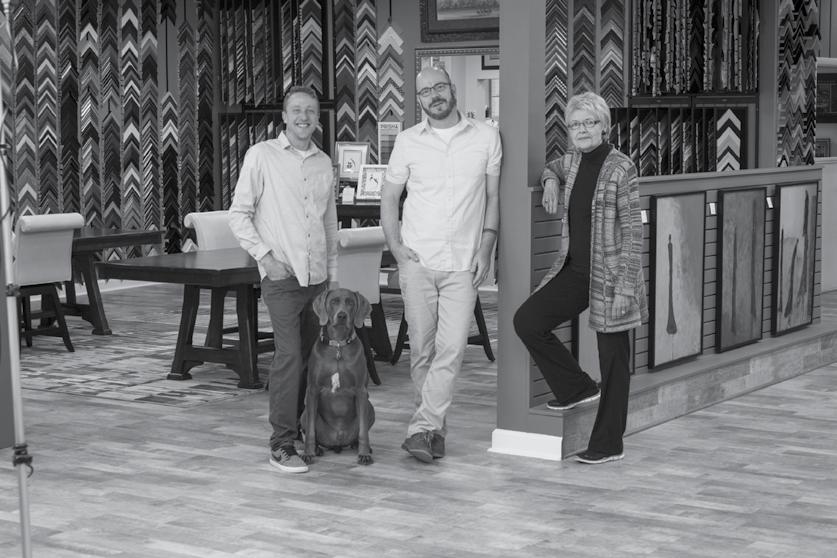

gingershangup.com

Some smart window treatments are equipped with sensors that track the sun’s position, adjusting the window coverings accordingly to optimize light and temperature control throughout the day. By blocking harsh rays from heating up your home in summer and preventing heat loss in the winter, smart shades can improve the energy efficiency in your home and reduce your energy costs. You’ll go about your day while your window treatments efficiently adjust themselves with whisper-quiet motors!
Automated window treatments that use a voice command or smartphone app are especially valuable in homes where there are lots of windows or where some are located in hard-to-reach areas. As a bonus, smart window treatments boost home security by making it appear that someone is home even when you’re on vacation!
Beautiful window treatments offer homeowners new ways to elevate their interiors and create a customized design statement. When paired with exciting new smart features that offer convenience and energy efficiency, new window treatments can take your living spaces to the next level!

Sources for this article included: houzz. com, hgtv.com, and housebeautiful.com.

By Leslie Byrne
When you’re ready to start or expand your family, the last thing you expect is to have trouble getting pregnant. When it doesn’t happen as quickly as you hoped, the experience can become frustrating, emotionally draining, and isolating. It can feel like you’re the only one struggling, but infertility is more common than you think. Thanks to advances in reproductive medicine, there is more hope than ever for couples navigating this challenging path.
Not getting pregnant within the first few weeks or even months is not necessarily a cause for concern. Infertility is typically defined as the inability to conceive after 12 months of regular, unprotected sex. For women over 35, that timeline shortens to six months before doctors recommend seeking help.
Approximately 12 to 13 out of every 100 couples will experience difficulty conceiving. Overall, the causes of infertility are divided evenly: about one third of cases are due to female factors, another third to male factors, and the rest are a mix of both or are unexplained.
For women, common infertility causes include ovulation problems, often due to hormone imbalances. Blocked fallopian tubes, uterine abnormalities, or fibroids (non-cancerous growths) can also be to blame. Lifestyle and overall health are also important considerations. Factors like advanced age, smoking, heavy drinking, poor diet, high stress, intense exercise, or weight issues can all reduce fertility. Other contributors include a history of STDs, endometriosis, thyroid conditions, and prior chemotherapy or radiation.
For men, infertility often stems from low sperm count, poor
Our expert interventional radiologists work with your doctor to diagnose and treat fibroids with minimally invasive options like UFE.

Schedule your appointment today and experience the
sperm quality, or erectile dysfunction. A man’s fertility can decline with age, smoking, heavy alcohol use, steroid use, or chronic conditions like diabetes. Even childhood illnesses, such as mumps, can sometimes play a role.
When it is time to seek help, couples can consult a reproductive endocrinologist. A urologist with specialized training in reproductive medicine often evaluates male infertility.
Testing typically begins with a physical examination and a review of the patient’s medical history. For men, a semen analysis checks sperm count, movement, and shape. For women, tests may include blood work to check hormone levels, pelvic exams, and imaging to evaluate the reproductive organs. One standard test, an HSG (hysterosalpingogram), uses dye and x-rays to see whether the fallopian tubes are open. Other procedures, like laparoscopy, transvaginal ultrasound, or hysteroscopy, give doctors a closer look at the uterus and ovaries.
Once the cause of infertility is identified, treatment is tailored to the couple’s situation. Many women start with medications to

Uterine Fibroid Embolization
UFE works by blocking blood flow to fibroids, causing them to shrink— ideal for women who want relief without surgery.
• Minimally invasive, outpatient procedure
• Relieves symptoms like heavy bleeding, pain, and fatigue
• Short recovery time and low risk of complications
• Preserves the uterus
• Most insurances cover treatment for symptomatic fibroids
stimulate ovulation. These can be taken orally or by injection and may increase the chance of pregnancy by 25–50 percent. In some cases, surgery is needed to address anatomical issues or remove fibroids.
If first-line treatments aren’t successful, assisted reproductive technologies like in vitro fertilization (IVF) may be recommended. With IVF, mature eggs are collected from the ovaries, fertilized in a lab, and transferred into the uterus. IVF is the most effective form of fertility treatment and continues to evolve, with new techniques and improved success rates.
A more holistic and increasingly popular option is NaProTECHNOLOGY (Natural Procreative Technology), which focuses on restoring natural fertility through charting cycles and minimally invasive surgery. It doesn’t utilize synthetic hormones and is often more affordable than IVF.
While these treatments offer new hope, they can also be emotionally and physically demanding. The journey is intense. The partner with fertility issues may struggle with guilt, while the one undergoing treatment may feel overwhelmed. Financial strain is also common, especially if insurance coverage is limited. Treatment doesn’t always work immediately, or at all. This is why communication and mutual support are so important. Many couples benefit from therapy or support groups as they navigate the ups and downs of infertility together.
Eating a balanced diet, exercising moderately, reducing alcohol and tobacco use, and managing stress all contribute to a healthier lifestyle. Some couples also try acupuncture, herbal supplements, or homeopathic remedies, often with emotional and physical benefits, especially when combined with medical care.
Regardless of the approach, it is essential to be informed. Ask questions, seek second opinions, and choose providers you trust. Reproductive endocrinologists are highly trained in the latest fertility treatments. The CDC also offers a national database that allows someone to compare fertility clinic success rates.
If you are struggling to conceive, know that you’re not alone and that this is not the end of your story. Whether you pursue medication, IVF, surgery, natural approaches, or a combination, the path to parenthood can be filled with both challenges and hope. With science, self-care, and a strong support system, your next chapter could be the one where your biggest dream comes true.

Sources for this article included: my.clevelandclinic.org, mayoclinic.org, cdc.gov, babycenter.com, and catholicmedicalcenter.org.



Our relationship with our hair, even the hair we don’t want, is very personal. Our hair shapes how we see ourselves, even how we define ourselves. Think of the scene in GI Jane in which Demi Moore shaves her head. Pivotal scenes like this reveal dramatic changes in the character—changes that go far deeper than their hair. The character is a different person afterward. What would be the change in you if you could stop tweezing, plucking, and worrying about unwanted hair?
Mary Brennan would be happy to help you find out. She is a Licensed Electrologist (LE) and Certified Professional Electrologist (CPE) with a Bachelor of Science in Nursing (BSN). Mary owns Absolute Perfection Electrolysis in Omaha, and she has been helping people feel better about themselves for 28 years. She went into this field because she personally understands the difference it can make in a young girl’s life when she no longer feels self-conscious about excessive facial hair. Electrolysis permanently removes unwanted hair by sending a small electrical current into the hair follicle, preventing hair from growing. In contrast, laser hair removal emits light converted to heat, which inhibits or delays hair growth from the treated hair follicles. Those who have laser hair removal may have to deal with the same hair coming back later. Those who undergo electrolysis will not experience hair regrowth.
As with laser hair removal, electrolysis is not a one-and-done procedure. The cycle of hair growth has three stages: anagen (growth), catagen (transition), and telegen (rest). Each hair follicle contains two to five hairs, and each hair may be in a different part of the growth cycle at any given time. Electrolysis (and laser hair removal, for that matter) can only affect hairs that are in the growth stage. While one hair in a follicle is in the growth stage, another could be resting below the surface, where the electric current won’t affect it. Thus, multiple treatments are needed to ensure complete treatment of all the hairs in the follicle.
Conditions that affect the pituitary glands, menopause, and other hormonal changes often cause hair to grow where we don’t want it. Mary has seen great change in the people she treats with electrolysis. There is a certain kind of confidence people gain, she says, when they no longer need to worry about hair sprouting in unwanted places.
Absolute Perfection Electrolysis is a warm and cozy salon. Mary ensures privacy for her clients and understands the emotions that sometimes accompany the hair removal process. Mary has an unassuming personality—there is a sense of ease about her that makes it easy to talk with her. For women who struggle with facial hair, getting electrolysis is a freeing experience. They can shelve their tweezers and
By Charlene Pierce

magnifying mirrors and leave the house each day feeling confident that they look good.
Mary begins the process with a free consultation for each client. During the consultation, she determines the size of the area to be treated and the amount of hair in that area. Then she provides a detailed description of the process so the client fully understands the time required for full treatment and what to expect. This is the perfect time for clients to have all their questions answered.
During the treatment, the client may feel a tingling sensation. It isn’t painful, but Mary can provide a numbing cream for clients who find the sensation too uncomfortable. Afterward, the treated area may be red for several hours, but the client can resume normal activity. The site needs to stay clean while it heals, which typically takes 24 to 48 hours.
Most clients will need several treatments scheduled a week or a few weeks apart. Each treatment takes anywhere from 15 minutes to an hour, depending on the size of the area. While it varies for each person, it generally takes at least eight months to treat all the growth cycles for each hair follicle. After that, the hair is gone permanently, and clients never need to worry about regrowth in the treated areas.
Mary enjoys her work and seeing the confidence it provides her clients. She works with people of all ages, from just post-puberty all the way to the golden years. She is experienced with the unique hair removal needs of individuals in the LGBTQ+ community and is happy to work with people of all genders.
Absolute Perfection Electrolysis is located in the Salon Suites at 7810 Dodge Street. Mary’s hours are 9:00 a.m. to 9:00 p.m. on Tuesday, Wednesday, and Thursday. To schedule a free consultation about your hair removal needs, call Mary Brennan at 402-398-3300 or send a message to davidmarybrennan@cox.net. Learn more at omahaelectrolysis.net.






By Linda Barnes
Familiar customs and rituals are invaluable after the loss of a loved one. They help us to express our grief and feel comforted by those who share our loss. Planning a funeral ahead of time lightens the load for our families during one of life’s most challenging times.
Proactively making informed decisions about the end of life is one of the kindest things we can do for our loved ones. It can also be quite difficult. Thoughts of death understandably generate anxiety. Recognizing the benefits of pre-planning can go a long way toward easing those fears.
Funeral service professionals have the training and experience to guide individuals and families through the process of pre-planning. Funeral homes generally have one or more staff members who specialize in helping clients understand the many options. You can get details during an individual appointment or a group learning session.
Choosing a funeral home may be the first major decision. Perhaps friends or families have used a particular service provider and were pleased with them. However, if you have no personal recommendations, it is ideal to visit more than one to make comparisons.
Planning ahead can also save money. Loved ones tend to spend more when under the stress of loss and grief. Preplanning ensures a service that fulfills your wishes and takes into consideration the
anticipated needs of family and friends.
A cremation versus burial decision may require some research to learn what each involves. Though burial has a long tradition, cremation is now preferred by 60 percent of consumers. It costs, on average, about $2,000 less than embalming and burial.
Many people find that viewing their loved one after death helps them to face the reality of their loss, to allow space for grief, and to say goodbye. It is certainly possible to have a visitation and open casket service before proceeding with cremation.
Funeral home personnel will meet with you and provide a list of costs for various goods and services. They may offer packages for ease of planning, but consider whether you actually want everything in a particular package.
A plan might cover services of the staff, transportation of the deceased to the funeral home, preparing the deceased for burial or cremation, a casket or cremation container, a venue for the service or celebration, a casket or urn vault, flowers, and funeral folders.
At Bath Pros, we build one-of-a-kind bathrooms.
Our solid stone bathrooms are 100% customizable and come in over 150 colors
Our team specializes in design, manufacturing and professionally installed bathrooms Contact us today for a free in-home design consultation.




Some costs, such as death certificate, clergy, or musicians, may not be covered.
Pre-planning a funeral does not necessarily mean paying for it in advance, but pre-paying does have some advantages. If you pay in advance, you may be able to lock in today’s prices for products and services that may cost more at the time of your death. (This should be clearly outlined in your contract.) It also ensures that your family won’t have to come up with the payment later.
Options to pre-pay for a plan include Pre-need insurance policy, Revocable Prepaid Trust-funded contract, or Irrevocable Prepaid Trust-funded contract. With these methods, a third party would pre-pay the funeral home. If one anticipates the need to qualify for Medicaid, pre-paying funeral expenses may be an acceptable way of paying down assets. States differ in their requirements, so seek assistance from someone familiar with your state’s rules.
Veterans or spouses of veterans may be eligible for government funeral benefits, including burial in one of the national cemeteries. Check with the Department of Veterans Affairs. Some funeral homes offer veterans pre-planning discounts.
Pre-planning and pre-paying can work very well. However, issues can arise. For example, the funeral home could close, or you might move to another city. Most of these contingencies can be covered by your contract, so make sure you understand what will happen in case of a change.
Interestingly, a survey showed that 62 percent of consumers believe that it is important to let family members know about one’s funeral wishes, but only about 21 percent do so. It may be that loved ones are reluctant to talk about end-of-life planning.
To initiate a discussion, it is good to have information on pre-planning options and legal requirements on hand. After the family has shared a meal or during a family vacation might be a suitable time. Maintaining a relaxed and open atmosphere can help facilitate a more comfortable conversation.
It’s also wise to put together instructions for your family. The binder I’ve made for my family contains banking information, the location of important documents, the receipts for purchased cemetery lots, and even a onepage summary of my life to help facilitate writing an obituary. Any planning you do ahead of time will relieve stress for your loved ones when they are grieving.

Sources for this article included: funeralbasics.org, seniorsinfo.org, nfda.org, and aarp.org.



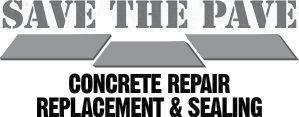



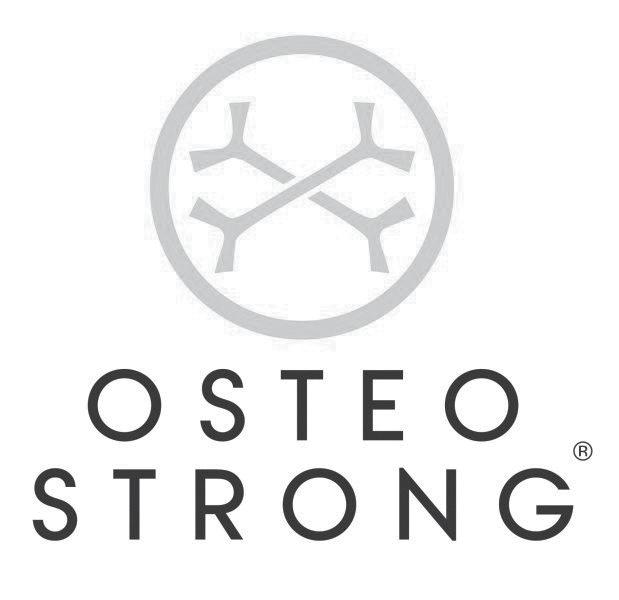
By George Morgan
A recent article in the Wall Street Journal reports that Americans are saving more. “Saving,” in this context, does not mean that we are paying less for eggs and gas. It means that we are putting current dollars away for future consumption. At the heart of this phenomenon is the nation’s 401(k) plans.
In the mid-1970s, Congress passed legislation creating the self-directed 401(k) retirement program. The goal of the legislation was twofold. First, it was meant to relieve employers from the burden of providing for their employees’ retirement funding. More importantly, it was meant to allow individuals to control their own finances during their golden years.
The initial response was underwhelming. But today, five decades later, the 401(k) program has reached an inflection point. About 70 percent of the private sector workforce now has access to a 401(k) plan. In 27 states, there is a mandatory 401(k) enrollment requirement. Even though the market took a down turn at the beginning of the year, 401(k) participation rates continue to rise, and the savings rate for the first six months of 2025 is up to 14.3 percent of income. Of that 14.3 percent of income, 4.8 percent is the employer match! That’s free money, folks!
Within a 401(k) program, employees are allowed to contribute a portion of their wages (exempt from taxes) to a personal account set up by their employer. The amount of the deduction is limited to a percentage of their income, but that limit has risen, over time, in order to take account of the negative impact of inflation. Should the employee change employers, they can take advantage of the provision which allows the employee to move their assets to their new employer’s plan. There is also a provision in the tax code that allows employees to move their former employer’s match with them to the new employer’s plan.
Employers who choose to offer a 401(k) plan are responsible for hiring a licensed professional or firm to conduct the record-keeping function of their plan. This includes enrolling the employees, filing the necessary documentation with the government, and providing the employees with monthly statements. The employer must also hire an investment professional to select a menu of mutual funds for the employes to choose from.
According to data provided by the US Department of Labor, the total value of American 401(k) plans is $9.7 trillion. The average 401(k) plan is worth $126,527, but the assets are unevenly distributed across the workforce based on a person’s age and the number of years they have worked. Younger workers generally have small balances, while those approaching retirement age have larger balances. There are several million older workers with seven-figure account balances.
Participants in 401(k) plans still face major investment challenges: They must manage their own account, but they are limited to a menu of mutual funds selected by the broker hired by their employer. The broker charged with selecting the mutual funds in the fund menu is compensated by the funds they select. As a result of this
potential conflict of interest, many fund menus are top heavy with expensive, actively managed mutual funds.
Fortunately, Big Brother is on the side of the employees here. The US Supreme Court has ruled that employers must provide their employees with reasonably priced mutual fund options. Those who fail to do so must compensate their employees for the loss in investment returns. How do we define a “reasonably priced” mutual fund? After over a decade of litigation, the answer to that is migrating toward index funds.
Once a worker reaches retirement age, they have the option of moving their dollars into a self-directed IRA. Those reaching this juncture are then in complete control of their finances. Most of these dollars currently reside in one of the three major discount brokerage firms. This opens the door to a vast array of investment options.
Account holders are no longer restricted to a menu of mutual funds prepared by their former employer’s investment professional. They can purchase individual stock and bonds, annuities, and fixed income products, none of which were available in their previous 401(k) programs. They also have the option of establishing a relationship with a financial advisor who will manage their account with or for them.
A sign on a local gym wall reads, “If it is to be, it is up to me.” If you want to join the millionaire ranks, the mechanism is in place, waiting for you to take control of your own financial future. Talk to your employer, do your homework, and always take full advantage of an employer match! Never forget: No one cares as much about your money as you do.

Editor’s Note: George Morgan has five decades’ experience in all phases of the investment process. He is currently the Founder and Principal of Morgan Investor Education. His website is morganinvestoreducation.com.
The opinions voiced in this material are for general information only and are not intended to provide specific advice or recommendations for any individual. To determine which investments July be appropriate for you, consult your financial advisor prior to investing.
Our immediate family is made up of three generations. Sometimes, we all find ourselves living under the same roof. The reasons for these periods of togetherness vary—there are instances of waiting for a new home to be available, as well as other bridges to cross, that bring us together spiritually, mentally, and physically.
At one time, I asked my mother if she would like to come and live with us. “NO,” she replied. She reminded me that she had already lived with her children for 18 years each…and that was plenty. Of course, I took that pretty hard. In truth, I think she was speaking to the essence of her desire to enjoy her own independence. All in all, I believe that she chose correctly—she was as self-determined as I am, and it was probably best that we did live 30 miles apart. Mother was not a frail woman, and she may well have worn us all out.
Now that I myself am the age that she was when I began my campaign to move her into our home, I often feel the same way. There are a few differences between our circumstances—for example, Mother and Dad raised five children, whereas my husband and I only raised two. Even to this day, I am glad to have the next generation live in their separate apartment.
As we were growing up, our widowed grandmother lived with us. She was very frail and very emotional. We children made her nervous, and she made us nervous, too. Sadly, there was no communication to soothe us or help us accept each other. Of course, anyone who has lived with multiple generations under one roof recognizes that there will be moments that are less than sterling and that little hissy fits can break out at any time. Generally, however, I find it an appealing way to live.
I typically feel sorry for people who live with me because I am sure that I am always right and that everyone should do just as I say at all times. However, here is where the gift is: My cohabitants have always been and remain pretty clever at educating me and showing me that, more often than not, there are at least two sides to a story and more than one way to consider any situation—that not everything is black and white. I know they’re right, and I appreciate what they have done for me as they work diligently at keeping my mind broadened. We may be from different generations, but we seem to share the same core values. In fact, it’s become a favorite pastime for us to participate in casual debate. We don’t solve the problems of the world, but we do all gain new insights into how to approach and deal with those problems.
Throughout history, there have always been misunderstandings and lack of trust between generations. It is probably just part of living. As we grow up, it is natural for us to doubt our parents and teachers. We question authority. When we are young, we want more than anything to be individuals and to form our own ideas. In the end, everything usually falls into place.
By Sharon Knierim

We’ve all heard the term “generation gap,” but why does it really exist and why does it persist? I believe it is human-made and human-sustained. Like so many human endeavors, it is unnecessary and totally useless. Why not spend all the time and effort put forth to promote this gap toward a better end? Understanding other people, especially those closest to us, is one of life’s most wonderful gifts. Understanding others makes thinking and decision-making much easier and more profound, and it helps us understand ourselves.
Finding common ground is a process that does not often happen overnight. It takes work, dedication, and honesty, but the product of understanding each other’s values systems and eliminating gaps in communication is what brings us closer together. We won’t always agree, but making an effort to understand another person’s perspective really has no downsides.
If you decide to close the generation gap, you might have to do what I was forced to do—give up always wanting to be the person in the right. Nobody is right all the time. Who would want to be? Understanding is a two-way street, and you can’t truly travel that street by yourself. Luckily, it’s much more fun to travel with someone else.

Author’s Note: Research for this article was derived from four generations of adults ranging from 18 to 85 years of age. I would like to thank all parties who shared their candor and personal insights.
By Linda Sutherland
Cottage gardens have a long and interesting history. At first, cottage gardens were composed of medicinal plants and edibles like vegetables and fruits. As people began to get their food from markets instead of backyard gardens, cottage gardens became ornamental flower gardens (but still mixed in herbs and some vegetables).
The greatest appeal of a cottage garden might actually be its lack of a formal design. Having said that, some minimal design is required to differentiate the cottage garden from a meadow or woodland garden. Once you use paths and borders, the cottage garden starts to take shape. The landscape elements of a cottage garden include perennial borders, shrubs, trees, vines, and yes, some green lawn. The hardscape would include arbors, walkways, bird baths, water features, sitting areas, and edging or decorative borders.
Cottage gardens can offer a relaxed, almost romantic atmosphere with a mix of flowers, herbs, shrubs, and trees. This particular style allows for creative freedom and a sense of whimsy. It is a popular choice for many gardeners and it is far and away my personal favorite.
Cottage gardens are known for their vibrant colors, layered plantings, and fragrant flowers. They have a more relaxed, un-man-
icured look that is charming to all who visit. The visual interest is astounding, with its variety of textures, shapes, and heights of plants mixed with trellises and arches to add depth and appeal.
Another reason that cottage gardens are so delightful is that their diversity of plants attracts so many birds and beneficial insects like bees and butterflies. Many of the plants you can find in a cottage garden are perfect for creating bouquets to make for yourself or a friend. Cottage gardens allow for a great deal of creative freedom, which I personally love because you can experiment with plant combinations and color palettes. Your own personal touches can reflect your personality and style, making your cottage garden uniquely your own.
Let’s talk about some of the things that you may want to plant in your cottage garden. If you want to plant some vines to add height and interest, you cannot beat the clematis vine. They come back year after year and come in so many different colors that you are sure to
2,109 kids in Omaha are waiting on you to help them sleep tonight.
All children deserve a safe, comfortable place to lay their heads. Across the US, too many boys and girls go without a bed—or even a pillow—to sleep on. These children end up sleeping on couches, blankets, and even floors. This can affect their happiness and health. That’s where Sleep in Heavenly Peace comes in. We’re a group of volunteers dedicated to building, assembling, and delivering handbuilt bunk beds to children and families in need.


7,236
find something that you love.
Another vine that I love is the hyacinth bean vine. It thrives in the sun and has gorgeous leaves and pretty flowers. In the fall, it produces purple beans that are actually edible. Sweet peas are also a good choice for a cottage garden vine, but alas, they are annuals in my part of the world.
In my cottage garden, I always choose to grow some flowers with old-fashioned charm. Dahlias and delphiniums are a must for me. Their gorgeous blooms are just the ticket for a thriving garden. Echinacea is delightful and is hardy as they come. Originally known as the purple coneflower, echinacea comes in an amazing variety of colors now and is not fussy in the least.
Bee balm is a great choice because it attracts essential bees and its intricate blooms look very old-fashioned. Lupine is also a very cottage-looking plant, and the flowers are quite breathtaking. Liatris, phlox, and salvia are also very appropriate for an interesting look to your garden. I love the look of a great wave of salvia! It partners quite nicely with rose bushes.
Allium is always in my gardens. They are striking early bloomers, and they come in many varieties, heights, and colors now. Again, another plant that is not at all fussy! Black-eyed Susans are also a wonderful choice. They are such happy-looking flowers. They seem to thrive in hot weather and don’t ask much of their keepers.
You may have noticed a trend in my recommendations…I am not a fan of fussy plants. I usually try to make a deal with everything I plant, and it goes like this: I will make sure you have enough water, good soil, and sufficient nutrients. In turn, you will produce flowers and not be a “fuss-budget.” As you might surmise, this does not always work.
But that is one of the beauties of gardening! You learn by trial and error. Sometimes the best laid plans do not work. Make mental notes (and notes on paper!) and do not plant that particular plant the next year…or plant it again but in a different place. Honestly, there are some plants that I have no luck with and just will never plant again.
The point is this: You do you in a cottage garden. You choose what you want and how you want to create it. It’s un-fussy, un-manicured, but still delightfully curated. Enjoy!




Down the street, across the country, around the world—you help save the day. Every day.
Your help is needed now more than ever. Visit redcross.org.

Are you a stay-at-home mom, college student, or retiree who would like to and make some extra money, meet some great businesses, and get a little exercise? We need your help with our distribution of Women’s Edition in NW Omaha and Elkhorn—one to two days a month.
If you have a reliable vehicle, can lift 40 lbs., feel comfortable walking into multiple types of businesses, and know how to smile and enjoy yourself, this is a perfect job for you. Call Roxy at 402-397-0732.



Your dog can be your faithful companion and a source of joy, but that doesn’t happen automatically! You need to live up to your responsibility in the relationship by training your dog. Well-trained dogs are confident, are mentally stimulated, and behave in ways that their owners (and the rest of us) appreciate. Everyone loves good manners! A well-trained dog is less likely to attack or be attacked by another dog and is less inclined toward dangerous behaviors like running into the street…no matter how much that squirrel beckons.
Let’s get this out of the way: Yes, you can teach an old dog new tricks. Dogs are always learning! This is also true for dogs of different breeds. Some breeds, like retrievers and German shepherds, are known for being easy to train; this is why they are often trained as service animals or police dogs. That doesn’t mean that dogs of other breeds can’t be trained! Training might look different for dogs of different ages and breeds, but every dog can and should learn to behave appropriately.
You may consider training your dog by yourself, and you may well have some success with that. However, dog training is just like any kind of training, which means you’ll have the fastest success if you let a professional lead the way.
Professional dog trainers have worked with many, many animals. They will be able to assess your dog’s previous training, if any, and figure out where to start. They will demonstrate best practices, including positive reinforcement, and show you how to practice commands with your dog at home.
Dog training is available as classes or as individual training. Classes are generally the less expensive option. Dog training classes can be found through various places: pet stores, veterinary practices, humane societies, boarding facilities, animal rescues, and more. The class format is great for basic obedience training or refresher courses.
For more specialized training, consider private instruction—just you, your dog, and the trainer. Many professionals have websites listing their techniques, references, and rates. This is great for dogs with specific behavioral issues or if you’re looking to train your dog for a specific purpose, like as a therapy dog, show dog, or hunting dog.
There is currently no national certification for professional dog trainers, but the Association of Professional Dog Trainers has excellent standards and has members nationwide. To find a trainer near you, visit their website at apdt.com and click Locate a Trainer to search by zip code. The American Kennel Club and the Animal Behavior Institute also provide certification for dog trainers. Your local Humane Society and your dog’s veterinarian are great resources to find high-quality dog training in your area. You can also ask friends and neighbors with well-behaved dogs where they learned their tricks!
No matter what kind of training you choose for your dog, experts recommend that training sessions should be kept short, especially for young dogs. While in a training program, be sure that you and your dog have as much bonding time outside of training as possible. Play time and walks on leash are healthy for both of you and are essential to building a positive relationship.
By Jackie Byers

One thing to remember about dog training is that no amount of obedience training will result in a barkless dog. The “no” command will likely be useful for controlling excessive barking, but the truth is that dogs are going to bark. A barking dog is not misbehaving… it is communicating. Make sure that your dog is getting enough daily exercise and attention, and it will be less likely to carry on for what seems to you like no reason.
One dog owner I know loves that her dog barks for deliveries. “I can get to my packages before the porch pirates do!” she points out. This behavior is automatic for many dogs—they’re just letting you know that someone is approaching. Of course, my friend’s dog is barking from inside at deliveries outside, not hassling the delivery person in the yard. As I said, everyone appreciates good manners!
A last note to keep in mind about dog training: Experts agree that positive reinforcement is not just the best way to train a dog…it’s really the only way. Bad behavior needs redirection, but training is achieved through the positive reinforcements of praise, petting, and treats. With the help of a training professional, you and your dog can learn how to communicate better and enjoy each other’s company for years to come. A welltrained dog is a blessing for everyone.

Sources for this article included: akc.com, nehumanesociety.org, and dailypaws.com.
If you are like me, you have been on trains in many parts of the world, but not really here at home. I wanted to change that, so I booked trips on several of the different itineraries that Amtrak has to offer. I’m pleased to report that I had great experiences! Did you know that Amtrak has over 500 destinations in 46 states and can take you through the United States and parts of Canada? If you want to tour around the country, or even near home, have your travel agent book you on an easy and scenic getaway aboard one of Amtrak’s trains.
Train travel is just different from traveling on a plane, bus, or car. You have lots of legroom, no middle seat, and a generous bag policy. You can get up and roam around the train, so it makes for a very comfortable ride. And you see things you would never see when using a different mode of travel. Believe me, you will have your phone glued to the window, taking plenty of photos and videos along the way. Train travel is also particularly suited to traveling in a group. While some of your party rests or reads at their seats, the rest of you can grab a table and play cards while enjoying drinks and snacks.
Deciding where to go can be the biggest hurdle in planning any vacation. Amtrak’s website makes trip planning easy with several tools to answer all of your questions. A Trip Planning Map under the Plan tab shows all the routes in red. Pick a destination and see which trains service them.
Interested in riding bikes on your trip? You will be happy to know that you can bring your bike (for free or a small fee) on several of the routes. What a cool way to have a 100 percent car-free and adventurous trip.
Or do you want to have it all? Then take the Auto Train, which runs from the Washington, DC, area to Florida. Trade time driving hundreds of miles, gas money, and the stress of traffic on I-95 for a comfortable ride, free Wi-Fi, and having your vehicle, boat, or even RV ride along in an enclosed auto carrier.
Now that I have taken a few of Amtrak’s trains, I will always look for ones with observation cars known as Sightseer Lounges. These are the cars with windows that wrap from floor to ceiling so you can take in the views. If you’re taking a short trip, you’ll be very comfortable in the generous coach seats. For longer trips, book a roomette or bedroom, which also include meals in the dining car.
There are also routes with volunteer guides from the National Parks Services who give an enjoyable tour of the area while on board, pointing out natural and cultural points of interest and explaining the history of areas as you pass. You can find out which trains these guides will be on by visiting nps.gov and searching for Amtrak Trails and Rails Schedule.
The railroads have played an active part in helping to develop our national parks. We have such natural beauty right in our own backyard. For more inspiration, check out Amtrak’s Vacations & Rail Tours offerings, which include trips with accommodations on and off the train, meals, tours, and even car rentals.
What is in store for Amtrak? New trains and elevated experiences are coming your way. The new Amtrak Airo trains feature a modern design and better amenities that focus on comfort and efficiency. The first Amtrak Airo trains will debut in 2026. They will have spacious interiors and panoramic windows, and they can
By Jackie Williams

operate at up to 125 mph. Amtrak will also be introducing the NextGen Acela, which bring better, more modern amenities to Amtrak’s Northeast Corridor train.
Planning to take the kiddos along? Take the Auto train toward Orlando with the interactive and colorful Crayola experience until August 31st. Kids travel free on the train and also get free admission to the Crayola Experience with their Amtrak ticket through September 30th at locations in Easton, PA; Mall of America, MN; Orlando, FL; and Plano, TX.
Wherever you go, make sure to download the Amtrak app prior to riding. It will hold your ticket information and give you updates on your train, among other things. I recommend choosing a route where you can get off after 2–4 hours to explore a town and spend the night, then hop back on and repeat for a few days. Or look into booking a sleeper car for longer voyages. Do not forget to enjoy the views!

Sources for this article included: Amtrak.com, nps.gov, and Amtrak.com/Crayola.


Calco Enterprises, Inc.
Calco Enterprises has been in the business for over 48 years. We can provide phenomenal masonry work for residential and commercial projects alike
“While looking through your monthly edition of Women’s Edition, I saw an article regarding Calco Enterprises. I needed 2 retaining walls repaired so I contacted Calco Enterprises. Cal was professional and his team was amazing. The work was done in a timely manner and after the job, his team cleaned up everything so well you couldn’t even tell they were ever there. Very pleased with the results.” A.B.
Call today for a free estimate 402-630-2100.
The Grout Doctor®
The Grout Doctor® of Omaha is the one to call for all of your grout and tile restoration needs! We are locally owned and operated and backed by a nation-wide network.
Why The Grout Doctor®? Because we specialize in tile, grout, and stone repair, and we care. We are highly trained and knowledgeable, professional, timely, and insured. We use our own proprietary products, which are safe, effective, and gentle on our environment.
We have been breathing new life into old tile, grout, and natural stone for over 25 years. Call today 402-393-2565 for a Free Estimate!
Heafey, Hoffmann, Dworak & Cutler
Celebrating life since 1852. Heafey, Hoffmann, Dworak & Cutler provide caring and compassionate funeral and cremation services to the families in our area. Our staff and directors are committed to serving families by solving problems and providing personal satisfaction.
We have expanded our facilities and staff over the past 13 years to meet the growing funeral service and cremation needs of today’s families. Being family-owned and -operated for four generations is one of the cornerstones of our development.
Every detail is considered in planning a meaningful tribute to your loved one. Though not a complete list of our services, the following are several that are available: traditional service, graveside service, memorial service, and “celebration of life” service.





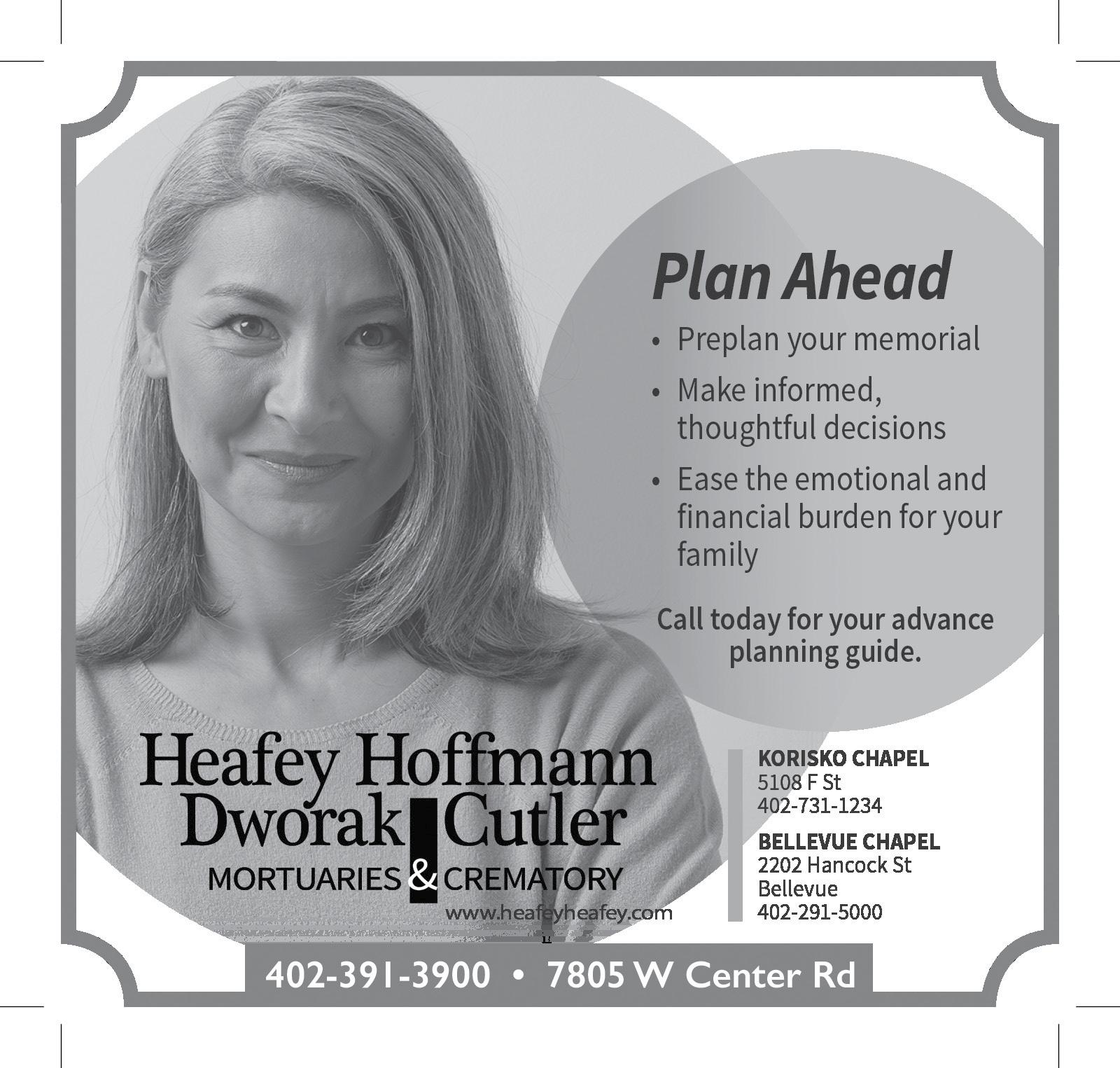
Envision Wildlife & Pest Control Services
One-Stop Solution for All Your Pest Removal Needs. Get top-notch pest and wildlife removal services from the skilled and experienced team at Envision Wildlife & Pest Control Services. From bats to bed bugs, we can eliminate all kinds of pests and wildlife from your residential and commercial property.
Backed by over 20 years of experience, we are a locally owned company providing excellent pest removal solutions since 2010. We are a BBB accredited business. Call us today at 402-5027800 for more information. Should we miss your call, we’ll get back to you right away!
Nebraska History Museum
New to View has something for everyone! From the Adventures of Kool-Aid Man to the Omaha Supernovas, find a piece of Nebraska’s pop culture and recreation history that everyone in your family can enjoy. See new and never-before-displayed items, discover new pop culture and sports stories from Nebraska, and learn about the people, events, and objects shaping Nebraska’s history. New to View: Showcasing Sound, Screen, & Sports is on display for a limited time. See it now at the Nebraska History Museum, 131 Centennial Mall North, in downtown Lincoln.
Visit our website: history.nebraska.gov.
Midwest Urgent Care
“If you need to have an amazing experience while you’re not feeling amazing, you need to visit Midwest Urgent Care. The staff made me feel very welcome and everybody was just phenomenal. They take the time to get to the bottom of your health issues and make sure you are 100% taken care of. I encourage you to visit Midwest Urgent Care, if you need to be taken care of. Thank you Midwest Urgent Care for taking such good care of me and my family!” —Megan
At 120th & Dodge: Open M-F, 9 a.m. - 7 p.m., Sat.-Sun., 9 a.m. - 3 p.m.
At 167th & Maple: Open M-F, 8 a.m. - 8 p.m., Sat.-Sun., 9 a.m. - 5 p.m.







It’s Sunday night, after the Fourth of July weekend. I am so very blessed because I am really looking forward to working tomorrow morning. I know so many people who absolutely dread Monday mornings. They hate their jobs. They get the Sunday night blues.
“Your work is to discover your work and then, with all your heart, to give yourself to it.”
—Buddha
My typical day is spent calling business owners to discuss how I can help them grow their business through Women’s Edition. I almost always have a great time. I laugh. I joke. I let these potential customers know that we are into our 40th year of publishing the magazine.
“The only way to do great work is to love what you do. If you haven’t found it yet, keep looking. Don’t settle.” —Steve Jobs
Over the past four decades, I have met thousands of entrepreneurs. It is fascinating to me to witness the passion so many owners have for their company. They have a positive energy around them that you can actually feel. I know that they will be successful. And then there are the rest of them. There is no smile, no energy, no enthusiasm. I know how detrimental this can be for the success of a business. I know that they have a very slim chance of being open six months from now!
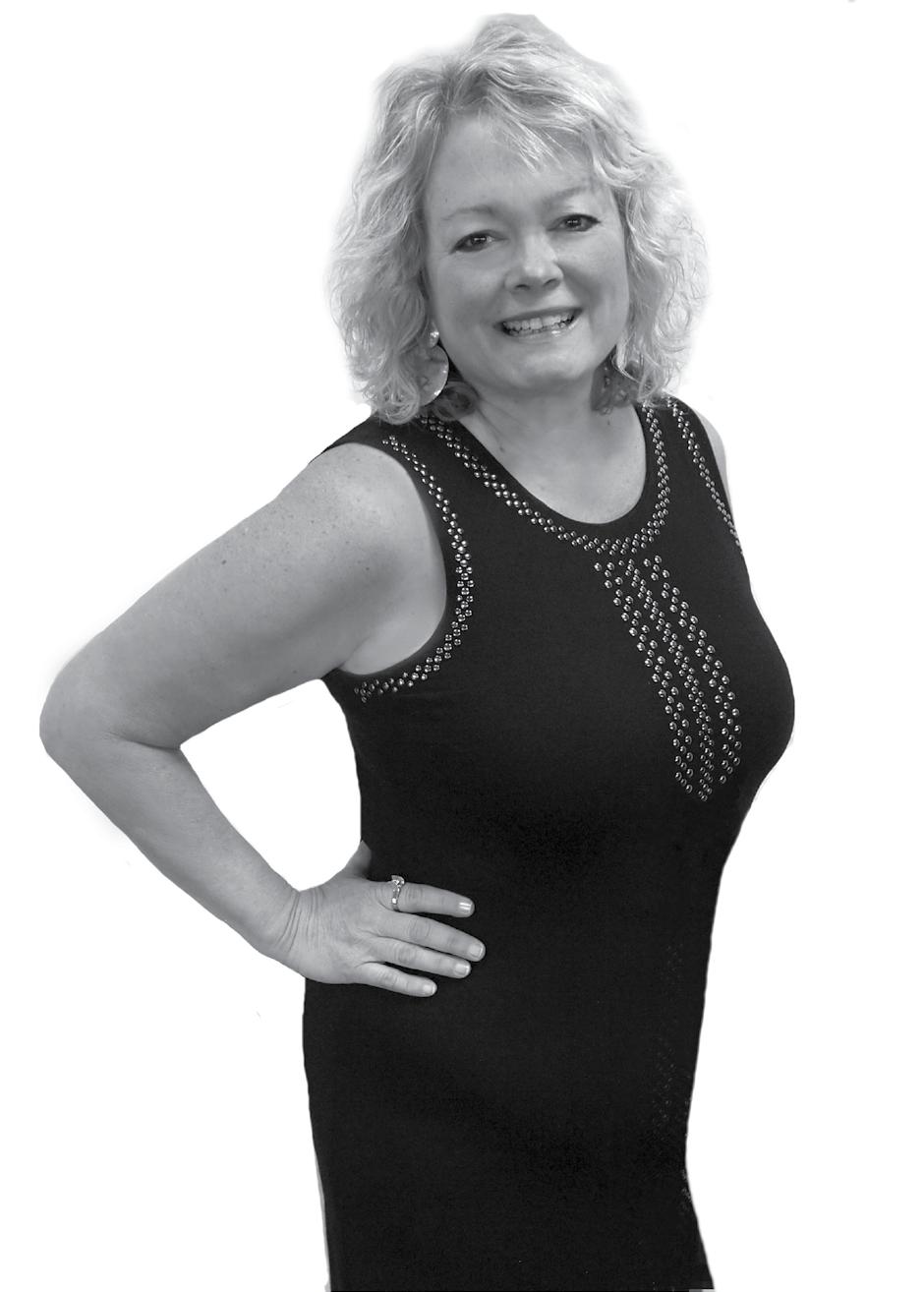
Janet Van deWalle, National Publisher
By Janet Van deWalle
“Success is stumbling from failure to failure with no loss of enthusiasm.” —Winston Churchill
Think about this as a consumer. I’m sure you have had the experience of walking into one of these businesses. Let’s say, it’s a restaurant. No one smiles. The staff are all staring at their phones. No eye contact. You eventually find a table. The menus are sticky. The server is rude. The food is mediocre. Problem? There is no passion coming from the owner and/or the general manager.
“I’d rather be a failure at something I love than a success at something I hate.” —George Burns
What should you do if you find yourself in a job you hate? Start looking. Write down a list of “If I could have it my way, my job would be….” When you are writing that list, only write down what you do want, not what you don’t want. Imagine being excited about Monday mornings. Visualize your feelings of matching up with something you have passion for. Make this exercise the most important thing you do every day. It will come.
“If you build it, they will come.” —Field of Dreams

Pain is a signal from the nervous systems to let you know that something is wrong in your body. It involves a complex interaction between specialized nerves, the brain, and the spinal cord. It is a vital part of life—you need to know when something hurts! But that doesn’t mean you’ll enjoy it.
There are two types of pain: acute and chronic. Acute pain lasts less than three to six months and is often characterized by its sharp quality. It may be associated with an injury or surgery. Chronic pain lasts more than six months. It’s usually associated with an underlying condition and can vary in intensity.
Chronic pain can be debilitating when it affects a person’s ability to perform activities of daily living. The painful conditions that require pain management are many and varied. Some of the most common are cluster headaches, shingles, shoulder joint pain, complex regional pain syndrome (CRPS), disc prolapse or slipped disc, pain from surgery, and arthritis.
If you have lived with pain for more than three months, it’s time to get connected with a pain specialist. While clinicians in specialties like neurology and orthopedics can offer some pain management options, it’s important to have someone on your team who is an expert in pain itself.
As you explore relief options, remember that it is unlikely one therapy alone will adequately manage your pain. A multimodal approach that combines various treatments is typically most effective. It’s a frustrating truth that chronic pain often requires a process of trial and error before relief.
Milder forms of pain may be relieved by over-the-counter medications. Topical pain relievers are also available, such as creams, lotions, or sprays that are applied to the skin to relieve pain and inflammation from sore muscles and arthritis. If over-the-counter drugs do not provide relief, your doctor may prescribe stronger medications (or stronger doses of OTC medications).
Trigger point injection is a procedure used to treat painful areas of muscle that contain knots of muscle (trigger points) that form when muscles do not relax. During this procedure, a healthcare professional uses a small needle to inject a local anesthetic that may include a steroid into a trigger point. With the injection, the trigger point is made inactive, and the pain is alleviated.
Implants are a rarely used pain treatment. There are two types: drug delivery systems like pain pumps and electrical stimulators like spinal cord stimulation implants.
Transcutaneous electrical nerve stimulation therapy, more commonly referred to as TENS, uses electrical stimulation to diminish pain. During the procedure, low-voltage electrical current is delivered through electrodes that are placed on the skin near the source of pain. Bioelectric therapy relieves pain by blocking pain messages to the brain.
By Deborah Daley

Physical therapy helps to relieve pain by using special techniques that improve movement and function impaired by an injury or disability. PT often consists of some exercises done with the assistance of the therapist and other exercises that are done at home.
When you are in chronic pain, you may have feelings of anger, sadness, hopelessness, or despair. Pain can alter your personality, disrupt your sleep, and interfere with your work and relationships. Psychological treatment is an important part of pain management. It reduces the high levels of physiological stress that often aggravate pain.
Many people use mind-body therapies, acupuncture, and nutritional supplements as part of their pain management plan. Others use massage, chiropractic and osteopathic (bone) manipulation therapies, therapeutic touch, herbal therapies, and dietary approaches to alleviate pain. These approaches do not come with scientific evidence of pain relief, but they very likely provide relief from stress, which is a component of chronic pain. Always talk to your doctor before trying an alternative approach, and be sure to tell all your doctors what alternative treatments you are using.
Many people suffering from chronic pain can gain some measure of control over it with the treatments described above. For people whose pain is still not sufficiently managed, pain clinics can be the answer. These special care centers are devoted exclusively to dealing with intractable pain.
Pain clinics generally employ a multidisciplinary approach, involving physicians, psychologists, and physical therapists. Various studies have shown as much as 50 percent improvement in pain reduction for chronic pain sufferers after visiting a pain clinic, and most people learn to cope better and can resume many normal activities.
Whatever therapy you choose, it’s vital to remember that there is no one-size-fits-all approach to pain management. Because they are less invasive and come with fewer risks, complementary therapy options can be a good place to start. Keep an open mind and talk with your healthcare provider.

Sources for this article included: mayoclinic.org, uspainfoundation.org, and aafp.org.
It’s nearly August and the end of summer as kids know it. It’s time to leave behind the lazy, crazy days of summer. It’s time to trade playing in the pool…or the lake, or the sprinkler…for sitting at a desk in a classroom, learning things the kids don’t yet understand the need for.
It’s time for the kids to prepare for days in school and the requisite homework and projects. They’ll feel the loss of the sense of freedom they’ve known for most of the summer. Summer activities like pickup games of baseball and softball are swapped for more structured pursuits like dance lessons and piano recitals.
The kids will trade exploring outside for exploring through textbooks and science classes. Summer days spent in the sun, clad in t-shirts and shorts or swimsuits, will soon be swapped for cooler weather in long pants, sweaters, and jackets. They can still get outside to jump in leaf piles or play in the snow!
Kids who earned a few dollars during the summer mowing lawns, working in gardens, or helping neighbors may now be asked to do other outdoor chores, like raking leaves or shoveling snow. There are always things the kiddos can do to help others and make a few dollars…maybe even earning an allowance from Mom and Dad

By Marge Shoemaker
for helping around the house.
If your kids don’t fit into any of these stereotypes I’ve dug up from my own memory of summers and the transition to the school year, don’t be worried. I know some kids like book learning more than playing sports. I know there are kids who would rather read a book, or look something up on the computer, than do physical activities.
One of the hardest things for parents is realizing that kids are all different. They have different ideas about what is fun. Some kids are good with their hands and performing different tasks with tools. Some kids would rather take something apart to learn how it works; others would rather learn by reading the instructions. Some kids love to build with LEGO bricks by following the directions; others only enjoy building their own creations.
Like adults, kids are all different—they’re people, too. However, every kid will probably need to adjust their schedules to adapt to school hours this fall. New schedules will need to be figured out to include not only school activities but also other interests. Kids, I wish you a pleasant school year, full of learning and enjoying all the new things that come into your life. Parents, I wish you a wonderful year watching your kids learn and grow.

Since working with Women’s Edition, my call volume has increased exponentially in just a matter of months. The customers reaching out to me fit my target market and are quick to share with me where they saw my ad. Women’s Edition took the time to get to know me and understand my needs in reaching out to, and connecting with, the right customer. Advertising in Women’s Edition is producing results even faster than expected!

— Sonja Skadberg,
3 Day Kitchen & Bath Authorized Dealer
Most parents feel the same way about the prospect of their teenager starting to drive…anxious and full of questions. Who should teach them to drive? What kind of car should they have? How will this affect my insurance rates? What if they get in an accident? These are all good questions. Luckily, they all have answers.
A driver’s education course is always a good idea, and your teenager will benefit if you teach them the basics first. You want them to be comfortable in the driver’s seat so they can get the most out of the driver’s ed experience.
Motor vehicle crashes are a leading cause of injury and death for young adults in the United States. Many of these accidents are caused by simple inexperience, so the more practice your teen gets, the better. Supervision and mentoring are vital for teens so they can develop the critical skills they need to stay safe on the road, even when other drivers make mistakes.
Driving statistics for teenagers show that they are more likely to crash if they are impaired, using a cell phone, or with peer passengers. Parents need to set and enforce rules to keep their teens safe. Rules should include seat belt use on every ride, limited nighttime driving, limiting passengers, and no cell phone use while the vehicle is in motion. Parents can set a good example by following these rules when they’re the ones doing the driving!
Completing a driver’s education course is an excellent way for your teenager to become a safe driver. These courses are offered by various providers, including the National Safety Council, AAA, and local driving schools. Get recommendations from your insurance agent or from parents of other teens.
To help parents support good teen driving habits, all 50 states have a three-stage Graduated Driver Licensing system known as GDL. This system limits high-risk driving situations for new drivers by separating licensing into the learner stage (supervised driving), intermediate stage (limiting unsupervised driving in high-risk situations like nighttime driving and multiple peer passengers), and full privilege stage (a standard driver’s license). A graduated approach can reduce your teenager’s crash risk by as much as 50 percent. You can learn about your state’s GDL laws from the Governors Highway Safety Association.
In addition to legal guidelines, consider a parent-teen driving contract. Your teen must gain experience and demonstrate safe driving habits in order to gradually increase driving privileges. This can help outline expectations, consequences, and safe driving practices. This brings us to how teens affect vehicle insurance rates. Adding a teen driver to a car insurance policy significantly increases premiums, simply because of the limited driving experience that teens have. A teen driver can actually add around $300 per month to an insurance premium. Insurance companies consider a teen’s age, gender, and driving record when they determine rates.
By Linda Sutherland

Many insurers offer discounts for students who complete a driver’s education course or who demonstrate responsibility by maintaining a good GPA. Additionally, if your teen goes away to college, some companies may offer a discount if they leave their car at home and only drive when they come to visit. Your insurance agent can help you find all the potential discounts for your teen driver. It never hurts to ask!
When it comes to a teen driver, you want them in a reliable car. You should prioritize the safety, reliability, and affordability of the vehicle. Look for vehicles with excellent safety ratings and a reputation for reliability. A teenager’s first vehicle should have good crash test ratings as well as safety features like anti-lock brakes, automatic emergency braking, and lane departure warning. If you’re buying a pre-owned vehicle, make sure it has reliable maintenance records. You don’t want your teen to end up on the side of the road, waiting for a tow truck.
Teens may feel comfortable relying on GPS systems to get around, but it’s important to be able to get where you’re going without verbal instructions. They would also benefit from some basic vehicle maintenance knowledge. If you have the know-how to show them how to change a tire and check their fluids, go right ahead! If you could use a refresher yourself, make an appointment with your mechanic to review the basic procedures.
Start early and talk to your teen about safe driving practices even before they get their learner’s permit. Monitor their driving until good habits are established. Make sure they know who to call if they get in an accident. And don’t forget the most important thing: Children learn by following your example. Make your driving habits ones that you would want your teenage driver to emulate!

Sources for this article included: acg.aaa.com, doi.nebraska.gov, and injuryfacts.nsc.org.
Do certain parts of your home need refreshing? Would you like to add warmth, personality, and a touch of nature? Custom florals, beautiful accents, and thoughtfully chosen pieces can transform a room, making it more inviting and uniquely yours. Beyond the Vine has been helping customers bring creativity and personal style into their homes for decades—in fact, they’re celebrating 40 years in business this year!
This locally owned shop offers an inspiring mix of custom silk floral arrangements, home décor, artwork, candles, and unique gifts. Whether you are updating your home, searching for a statement piece, or decorating for the holidays, the staff at Beyond the Vine is ready to bring your vision to life.
Owner Rose McCormick discovered her passion for plants and flowers as a young girl during childhood trips to Omaha’s Old Market with her mother. At age 15, she landed her first job, at Brandeis Department Store’s flower shop. She later earned a degree in floriculture from Kansas State University and a degree in business management from the University of Nebraska at Omaha.
At the age of 23, just a year out of college, Rose purchased the flower shop she
By Angella Arndt

had worked for, Younkers Flowers, located at the Center Mall. In 1987, she expanded to a second location inside the Younkers Department Store at Crossroads Mall. She remained there until 2003, when she relocated her business to a 4,300-square-foot showroom on West Center Road and renamed it Beyond the Vine.

The name Beyond the Vine reflects both the spiritual foundation and the creative vision behind the business. Rooted in the belief that Jesus is the vine and we are the branches, it expresses the idea that the designers’ creations reflect the gifts they have been given. The name also signifies the business’s evolution, from its core in floral design to broader offerings that include home décor and accessories.
At Beyond the Vine, you will find an extensive selection of the most lifelike artificial flowers and foliage. “These are not your grandmother’s plastic flowers,” Rose says. The shop offers items like silk petals, real-touch flowers, and faux greenery—all perfect for custom arrangements of all sizes.
If you want to bring the beauty of nature inside without the upkeep, check out the shop’s extensive collection of faux trees and plants in a variety of heights, shapes, and styles. “These artificial plants are lifelike, realistic, durable, and will not die,” Rose notes. “Our plants will remain the same size and shape without watering or pruning, which makes them perfect for people who have busy lives.”
Thoughtfully chosen furniture and accessories can turn any room into your favorite room. The interior decorators at Beyond the Vine work closely with clients to select pieces that reflect their style. “Our shop features a mix of transitional, contemporary, and traditional pieces, offering something to complement every style of home,” Rose says.
Rose hopes that every customer feels a sense of peace when they step into the shop. “A lot of our customers say they come in to ‘get their fix.’ We want them to feel like they are escaping the everyday by
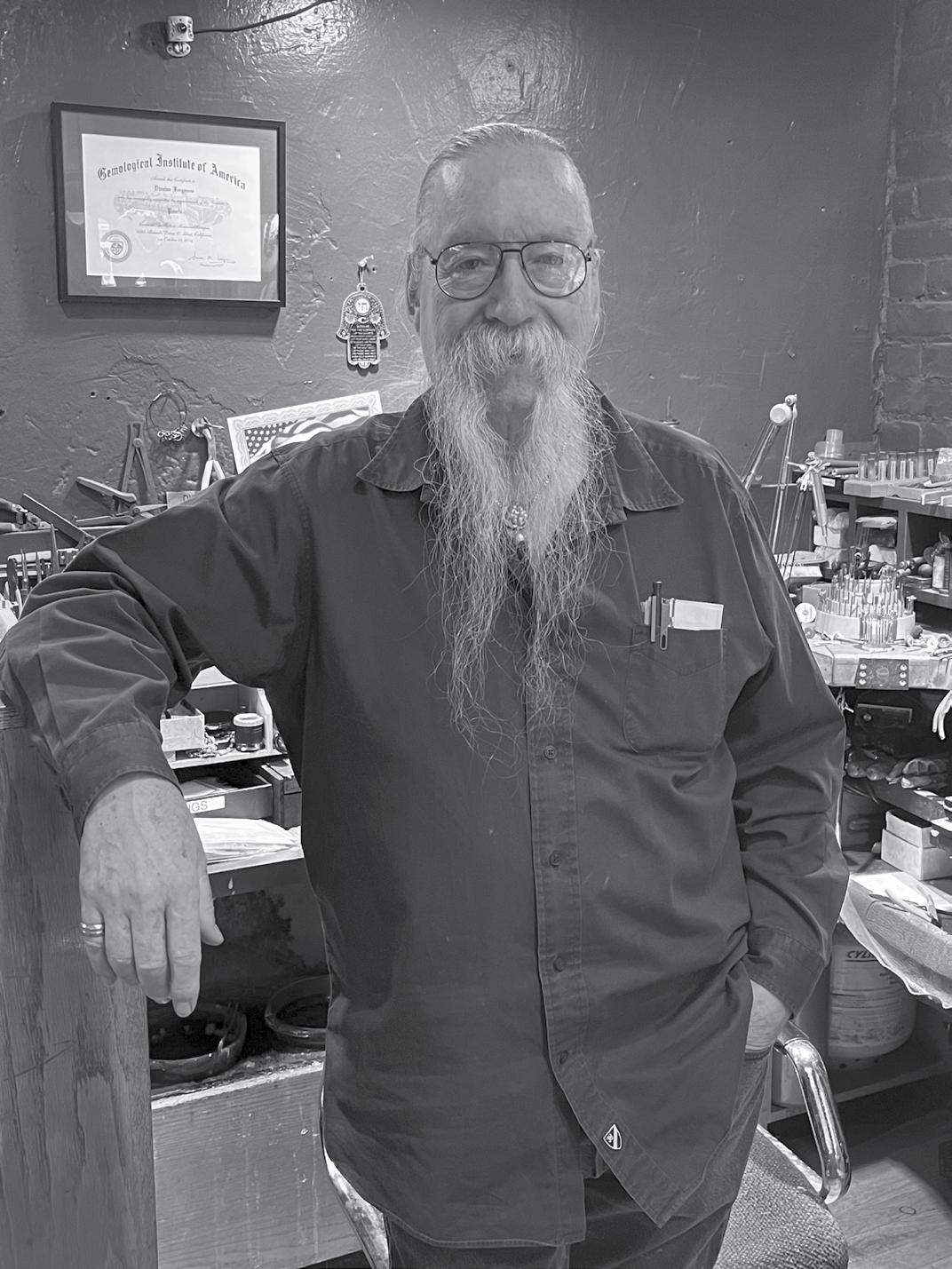
being surrounded by beauty.”
Supporting and empowering others is a cause close to Rose’s heart. She has coached, encouraged, trained, and mentored six of her employees to help them open their own businesses. “In my first 30 years of business, I saw a steady flow of entrepreneurs,” she recalls fondly.
She encourages people to support locally owned small businesses. “I am so grateful for the clients who have remained loyal to our business over the years, choosing local instead of buying from big box stores or ordering online.” Rose says she strives to buy local when she makes her own shopping decisions. “Unless we support local businesses, we will have fewer choices when shopping. And I like to see our tax dollars stay in our community.”
Rose says it is gratifying to help customers create beautiful spaces they love. “It means so much to see the joy on a customer’s face when I take the stress away and find a solution for their decorating needs.”
In celebration of their 40th anniversary in August, Beyond the Vine will offer anniversary savings on all home décor and silk flowers from August 1st to August 31st, 2025. Rose invites everyone to stop by and celebrate with them.
Beyond the Vine is located at 13206 Grover Street, in Omaha. The shop is open Monday through Friday, from 10:00 am to 5:00 pm, and Saturdays from 12:00 pm to 4:00 pm. You may call them at 402-9919221 or find them online at gobeyondthevine.com.


“We have always enjoyed working with Women's Edition over the past 30 some years. Over the years, we have created many new customers, after they saw one of our ads or one of the write-ups on our shop. The articles they have written on the store and owner over the years are always well written, in depth, and continue to create buzz for our business. We love that they know us all by name and really strive for us to get the most out of our advertising. Women's Edition will always be a place we will happily advertise.”
— Dwaine Ferguson, Owner
Many homeowners spend time, energy, and money maintaining their homes and caring for their lawns. However, one essential that is often overlooked is the water that runs through the home. The quality of your water can affect the flavor of your food and drinks, the lifespan of fixtures and appliances, and even your family’s wellness. From protecting your health to preserving your home, water quality matters more than you may think.
If your home receives water from a public water system, the utility is required to produce an annual Consumer Confidence Report. This report includes results from a state-certified laboratory that demonstrate how the utility’s water meets the standards set by the National Primary Drinking Water Regulations. If your water comes from a public water system and you have concerns about its quality, you can have it tested by a state-certified laboratory. You can find a list of certified laboratories on the EPA’s website. Homes that rely on well water should have it tested regularly by a state-certified laboratory to ensure it meets national drinking water standards. By reviewing consumer confidence report data, water quality test results, and your personal experience with your water, you can identify any issues that require attention. You may want to consider a water treatment system if specific contaminants, like lead, arsenic, or nitrates, are identified.
Some homeowners have safe water but want to improve its taste and odor. Others may deal with hard water that contains high levels of calcium, magnesium, lime, or other minerals. Although hard water generally poses no health risks, it can cause plumbing and maintenance issues, including scale buildup on fixtures, pipe corrosion, residue on tubs and showers, and shorter lifespans for appliances that use water, in addition to dull hair, cloudy glassware, and dingy laundry.
Several types of water treatment systems are available, including water filtration systems, UV purification systems, reverse osmosis, water softeners, and bottled water systems. How do you know which system is right for your home?
The first step in selecting a water system is to determine your water quality and the contaminants you want to reduce. Do you only need to filter drinking water? Do you also need to filter the water used for cooking and bathing? Understanding the quality of water coming into your home and identifying your water treatment goals should be your first steps. Review all features of each system you are considering and determine which features you need.
A point-of-entry water filtration system is installed where the main water line enters your home. These systems filter out common contaminants, including chlorine, chloramine, and heavy metals such as lead, pesticides, herbicides, and pharmaceuticals.
A point-of-use filtration system treats water at the point of use. Options include a filtered water pitcher, a filter attached to a dedicated faucet, or a device installed under the sink. These systems
are ideal for those seeking to purify water specifically for drinking and cooking purposes.
By Angella Arndt

Ionization water systems create hydrogen-rich, antioxidant water through the process of electrolysis. This process can adjust the pH level of your home’s water to be ideal for different purposes (more acidic water is good for cleaning; more alkaline water is good for drinking).
Ultraviolet treatment with pre-filtration utilizes ultraviolet light to disinfect and reduce the amount of bacteria in water. Ultraviolet treatment effectively removes household water contaminants, including protozoa, bacteria, and viruses, but it is ineffective in removing chemical contaminants.
Reverse osmosis filters remove over 99.99 percent of dissolved solids, making this type of system an excellent option for producing pure, clean water. These systems are typically installed at a single faucet, but whole-home systems are increasingly popular. Reverse osmosis systems utilize multiple filters to protect against a wide range of contaminants, such as bacteria, lead, pesticides, fluoride, nitrates, sulfates, arsenic, and perfluorooctane sulfonic acid.
Water softeners do not filter water but do prevent minerals like calcium and magnesium from causing scale buildup. The two main types of water softeners are salt-based softeners and salt-free conditioners. Salt-based softeners use ion exchange to remove minerals. Salt-free conditioners change the minerals so that they cannot form scale.
For those seeking high-quality drinking water without needing to install a filtration system, water delivery services provide a convenient solution. Many companies offer free delivery, setup, and maintenance.
Improving the quality and taste of water in your home offers many benefits. These benefits include better-tasting drinking water, reducing plumbing issues, extending the life of appliances, and improving the condition of your skin, hair, clothes, and dishes. Whether you are looking for a simple point-of-use filter or a whole-house system, there is a solution that suits your needs, budget, and lifestyle.

Sources used for this article included: bobvila.com, cdc.gov, epa.gov, waterfilterguru.com, whatiswaterwebsite.com, and enagic.com.

Say You Saw It In Women’s

By Anne Yankus
Keeping rugs and carpets clean is an ongoing battle, especially if you have kids or pets in your household. Since flooring gets dirty again so often, is it really worth a deep clean? The undeniable answer is YES! There are many health benefits to cleaning carpets.
This may sound absurd, but clean carpets improve indoor air quality. We all know that poor air quality in the home can exacerbate allergies and asthma and make your immune system work harder to keep you healthy. But what does the flooring have to do with it?
Carpeting and rugs act as filters that will trap any dust, allergens, and other pollutants that inevitably follow you into your home and settle on the floor. If you don’t regularly clean the carpeting, those pollutants and allergens will get kicked back into circulation every time you walk over them, lowering the air quality in your home. Vacuuming once or twice a week helps, but a deep clean is what you really need.
What exactly does “deep cleaning” entail? There are several different methods of deep cleaning carpets, and you’ll want to hire a professional for the best results. The highest-recommended methods of deep cleaning carpets are carpet shampooing, steam cleaning, encapsulation, and dry carpet cleaning.
Shampooing is a very popular and relatively inexpensive method. It uses a shampoo lather to separate dirt molecules from the
carpet fibers and suck them back up into the cleaning machine, just like conventional soap and water washing. The downsides are that carpet is difficult to thoroughly rinse and takes a long time to dry.
Steam cleaning is a little more expensive than shampooing but is still quite affordable. It generally will remove over 90 percent of dirt and bacteria from your carpet, and the high-pressure hot water that steaming utilizes has the added benefit of leaving your carpet fibers soft and fluffy. Steam cleaning uses no chemicals, so it’s a safe and eco-friendly option. On the other hand, it is less effective on stubborn stains than cleaning with a cleanser or detergent. As with shampooing, you have to wait for the carpet to air-dry.
Encapsulation came into vogue as a carpet-cleaning method back in the 1970s. It works by applying a liquid foam that will separate out dirt. The foam then dries into a crystalline powder that can be easily vacuumed up—leaving your carpet clean and dry! Since all chemicals used are easily removed by a standard vacuum cleaner, this cleaning method is considered to be eco-friendly. Unlike the shampooing and steam cleaning, encapsulation often charges by





We specialize in custom garage interiors. With a focus on design, form, and function, we create custom solutions to suit your home and lifestyle.
“Chad and Theresa and their entire crew are simply awesome! They installed my floor which is amazing and Theresa came up with a custom design for my workbench and storage units. It all came out better than I could have imagined. Their products are high quality. Honorable, honest, punctual, and kind. Use them for all your custom garage needs!” — Brandon







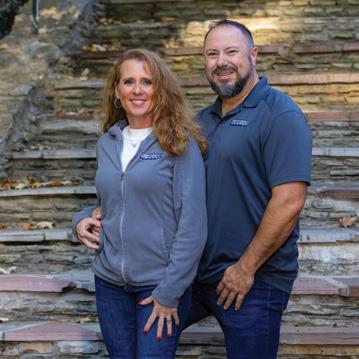


the square foot. Unfortunately, unlike traditional carpet shampoo, encapsulation only hits the surface of your carpet and doesn’t penetrate deep into the carpet fibers, making it less effective on stains.
Dry carpet cleaning is the least expensive option but is also probably the least eco-friendly. Like encapsulation, it uses a dry solvent to separate dirt from carpet fibers, but—like carpet shampoo—it can leave a residue behind that is difficult to clean out. It’s the most convenient and quickest way to deep clean a carpet, but it generally isn’t recommended for use in homes with small children or pets.
To ensure optimum benefits, have your carpets professionally cleaned at least every 12–18 months. For homes with heavy foot traffic, with family members who have severe allergies, or with indoor/outdoor pets, more frequent deep cleanings (every 6–12 months) are recommended. If you live in a household with someone who smokes or vapes, you may desire even more frequent professional cleanings.
Carpets may not be the only fibrous floor coverings in your home. What about rugs? They should undergo professional cleaning about as often as carpeting. The difference is that rugs can be cleaned at your home or can be taken off site to be cleaned and repaired at a professional’s facility.
A professional rug cleaner checks for things like rot, mold, mildew, dye or dirt stains, and fading before using a combination of wet and dry brushes and machinery to clean all the dirt out of your rug. If repairs are needed, ask in advance to see what kind of restoration they can handle. You would be amazed by what they can fix!
Because rugs can be moved, they can be dried either outside or using an industrial dryer at the cleaner’s workshop. They will be returned to their place in your home clean, brushed, and fluffy.
Regular vacuuming and spot-cleaning are vital steps in keeping your floor coverings clean and beautiful for years. For the full benefits of clean carpets and rugs, hire a deep cleaner to shampoo, steam, or otherwise clean your carpets and rugs.

Sources for this article included: carpet-rug.org, bhg.com, and today.com.
Window Cleaning, Pressure Washing, Roof Cleaning, Gutter Cleaning, Chandelier Cleaning, and more!





and Snacks Daily
The Franciscan Adult Day Center offers daytime support services for those diagnosed with Alzheimer’s, dementia, or other special needs.
Spiritual & Social Opportunities • Secure Environment Support Groups • Transportation

Call for a tour today. 402-393-2277 900












Brothers Tom and Steve Albracht run Albracht Perma-Siding & Window Company, their 70-year-old family home improvement business, and they pride themselves on putting the customer first. They improve hundreds of homes every year, and their long-term track record of customer satisfaction inspires a feeling of trust in the Omaha area.
Albracht Perma-Siding & Window Company began in the 1950s. Steve and Tom’s father, Al, purchased a home improvement firm call Perma-Stone Company, which had been established in 1942. Tom bought the business from his dad in 1985. After working in the marketing field, Steve joined Tom at the family business in 1992. Steve is now the Marketing Director and enjoys sharing information about their services with potential customers. These services include siding, roofing, doors, windows, and gutter protection systems.
Steve describes their business model as “consultative selling.” That means that they work with each customer to find the best products and services to meet their unique needs instead of convincing customers to purchase something in particular. “We offer no hassles and no pressure,” Steve says. “We meet with our clients, explore their needs, and develop a free estimate and plan. We set realistic expectations, don’t overpromise, and are responsive to our customers’ needs. We want them to be happy.”
Their customers must indeed be happy, since more than 85 percent of their business comes from referrals or existing customers who have come back for more. As Steve points out, personal referrals are always good news, but those numbers speak for themselves!
“We know that a satisfied customer is our best advertisement,” Steve asserts. “That kind of loyalty means the world to us. Our customers know our work, and they trust us. Not many firms in this industry can boast our longevity and those figures. My dad always said that if you take care of your customers, your customers will take care of you.”
One of those satisfied customers is Lori Buettgenbach of Omaha, who hired them to do the siding on her home. “They were very professional. From the initial quote to the final details, they were easy to work with. I would highly recommend them to anyone,” Lori says. “The crew that works with Albracht were also easy to work with. Any time I had questions for them, they were great at explaining things to me. Again, I would highly recommend this company!”
A gutter protection customer notes that they have been recommending the company to their neighbors, friends, and coworkers. “Steve and his company showed us exactly what a very professionally run and caring company should be!” A perhaps less effusive but equally satisfied siding customer in Plattsmouth shares, “They showed up every day, rain or shine. They did awesome work.”
By Deborah Daley

So many satisfied customers might make it seem easy, but running a business this successful is no small task. One of the biggest challenges for business owners in the home improvement industry is hiring qualified labor. The Albracht brothers have been very fortunate in this regard.
“Many of our crew members have been with us for several years,” Steve says. “They share our feeling of pride when we complete a project from start to finish and the customer is satisfied.” Having a solid team that works well together and does a great job is what allows Steve and Tom to confidently guarantee their work.
High-quality home improvement does not come cheap, but Tom and Steve look for ways to cut costs without cutting corners. One way they respect their customers’ budgets is by purchasing products directly from manufacturers instead of paying the extra cost of going through a distributor. This helps them offer amazing brands at great price points. The manufacturers they work with include ProVia doors, windows, and siding, IKO shingles, and Leaf Sentry.
Albracht Perma-Siding & Window Company’s quality services also extend to keeping clients educated and informed on incentives and tax advantages for these home improvements. “There are energy tax credits available and federal tax advantages for certain energy home improvements,” Steve says. “In addition, local groups like MUD and OPPD offer cost incentives. We stay up-to-date on these cost savings and pass them along to our customers.”
Albracht Perma-Siding & Window Company’s longevity, as well as its customer loyalty, speaks volumes to the quality of the services they offer. If you want to improve your home’s exterior, join the droves of friends and neighbors who have been enjoying their services for decades. Call them at 402-331-4666 or email the group at office@permasiding.com Learn more online at permasiding.com.


Have you ever felt inspired to learn how to love someone unconditionally? To expand your heart so fully that there is no judgment? No expectation of reciprocation? To accept that person as they are, flaws and all?
“Unconditional love teaches us the power of letting go and allowing others to be free to follow their own path.” —Paulo Coelho
I first heard the phrase unconditional love from my mother, Anne, decades ago. Mom was a very spiritual person and one of the most giving people I have ever known. Mom and I had many conversations about unconditional love. I would ask her if this type of love even existed. How could she just accept people walking all over her? What did she do with her feelings of being disrespected? How could she be so calm?
“Unconditional love means not expecting anything in return but cherishing the happiness of the person you love.” —Thich Nhat Hanh
My mom had multiple chances to test her own commitment to loving her family and friends unconditionally. Most of the time, she was able to meditate, center herself, and continue the commitment of unconditional love. Even though she strayed off this path on

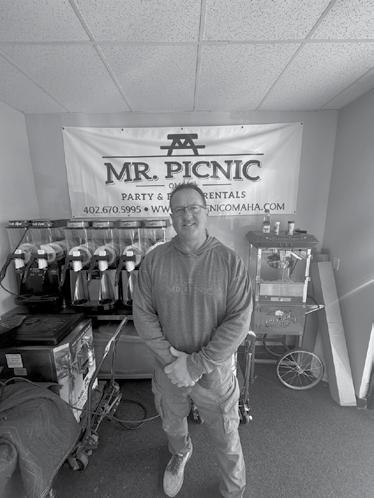
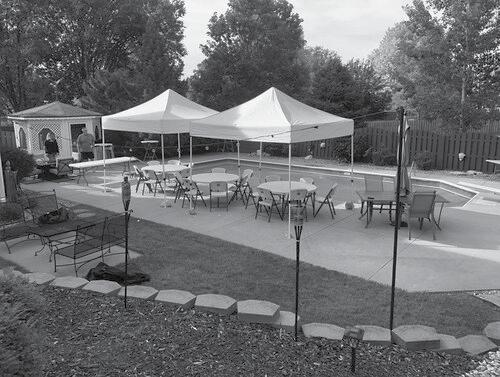

By Janet Van deWalle
occasion, she was able to return with an even stronger commitment to her beliefs. She told me that committing to loving this way brought peace to her. It gave her a sense of calm that was worth the commitment to stay on her path.
“Let the love you give come back and find a place in you.”
—Harpreet M. Dayal
Over the years, I have spent many hours reflecting on this concept. I have half-heartedly tried to manifest this in myself, toward the people I love. I admit that I am not even close to achieving this. Why have I not succeeded?
I now know that it has to start with me…with unconditional love for myself. Until I accept myself fully—warts and all—I will not be able to offer this to anyone else. I have to accept myself without judgment. I have to practice self-compassion, set healthy goals, forgive myself, make time for self-care, set boundaries—and keep them. And last, but not least, I must be my own cheerleader. Once I get better at that, I can work on the other people in my life who deserve this, too. Thank you, Anne.
“Love me without restriction. Trust me without fear. Want me without demand. Accept me for who I am.”—Anonymous


•
•







